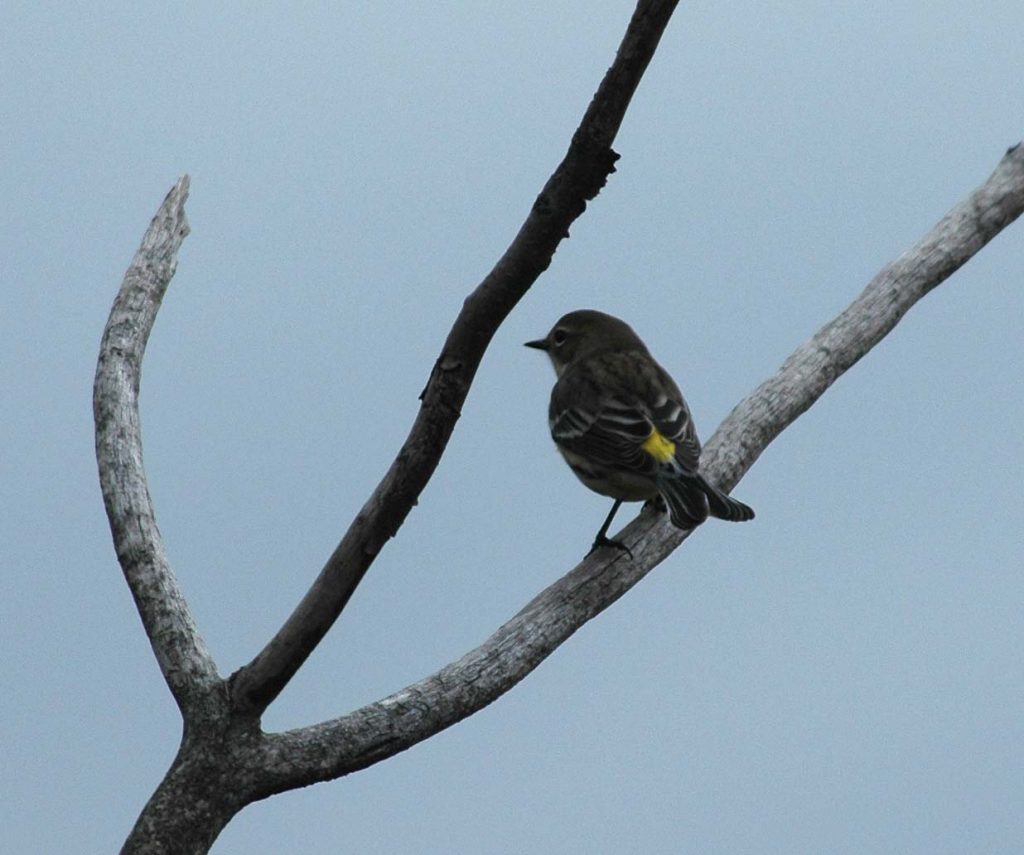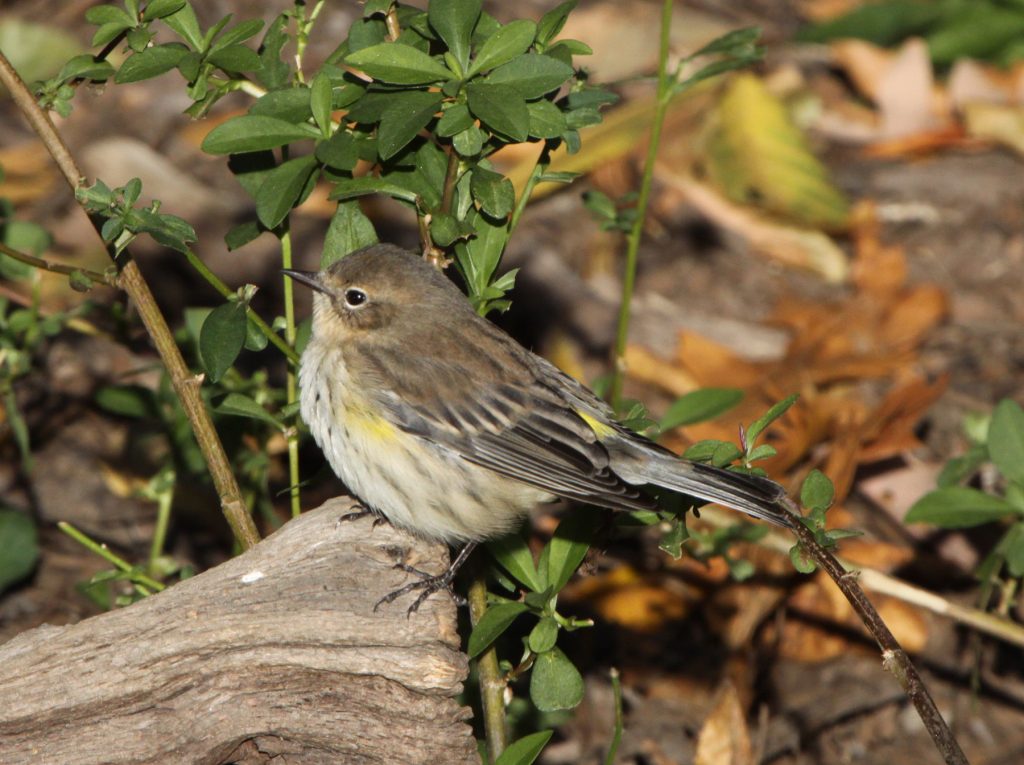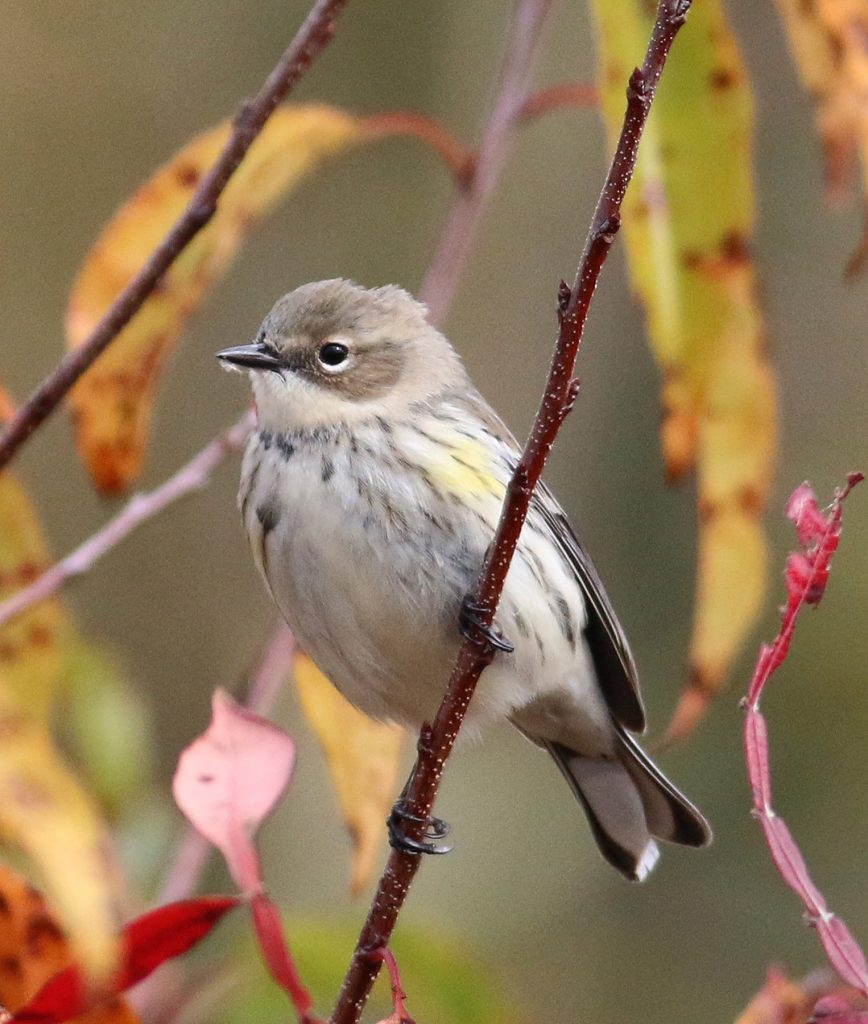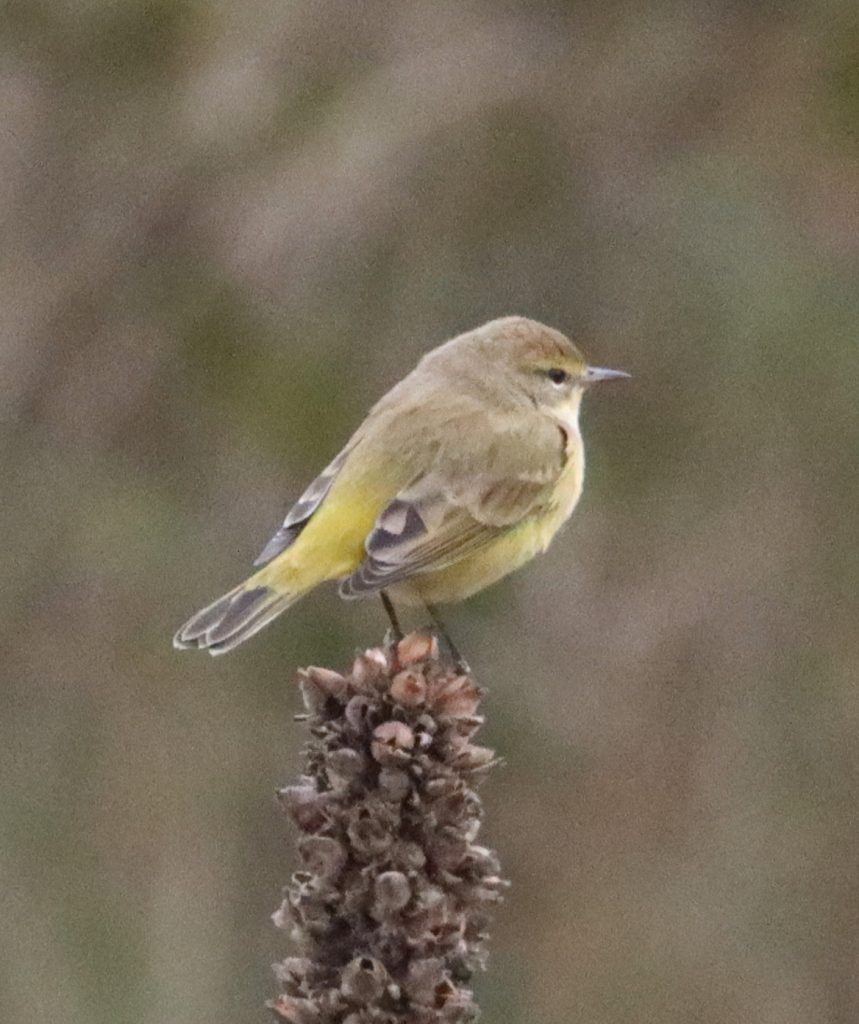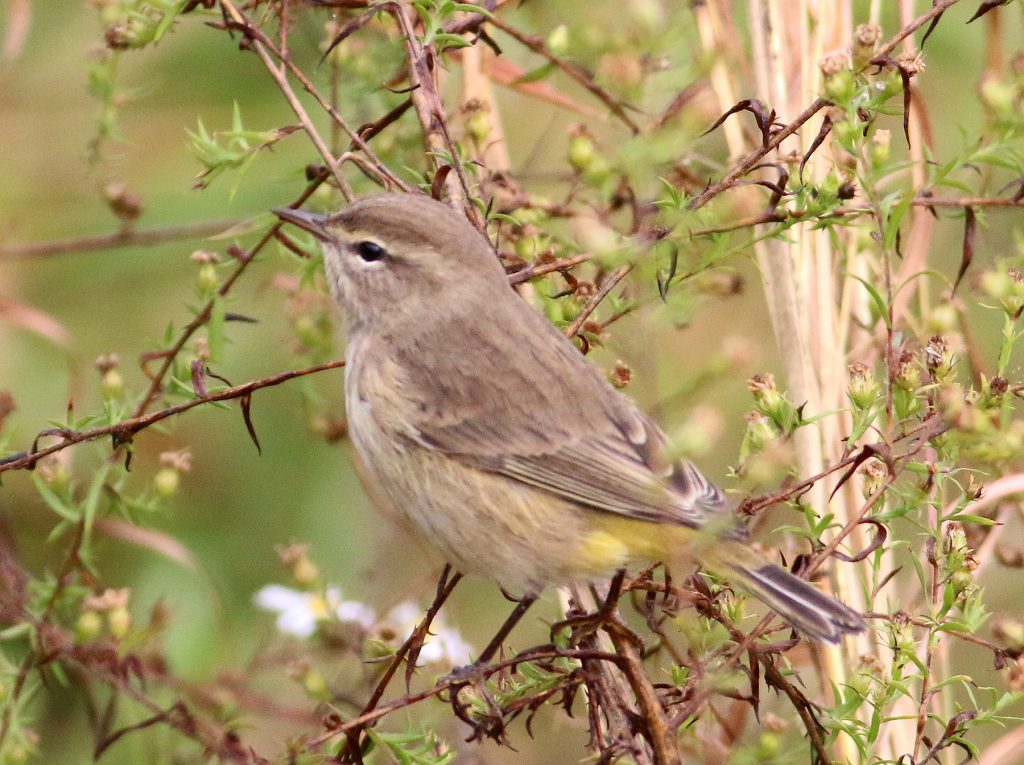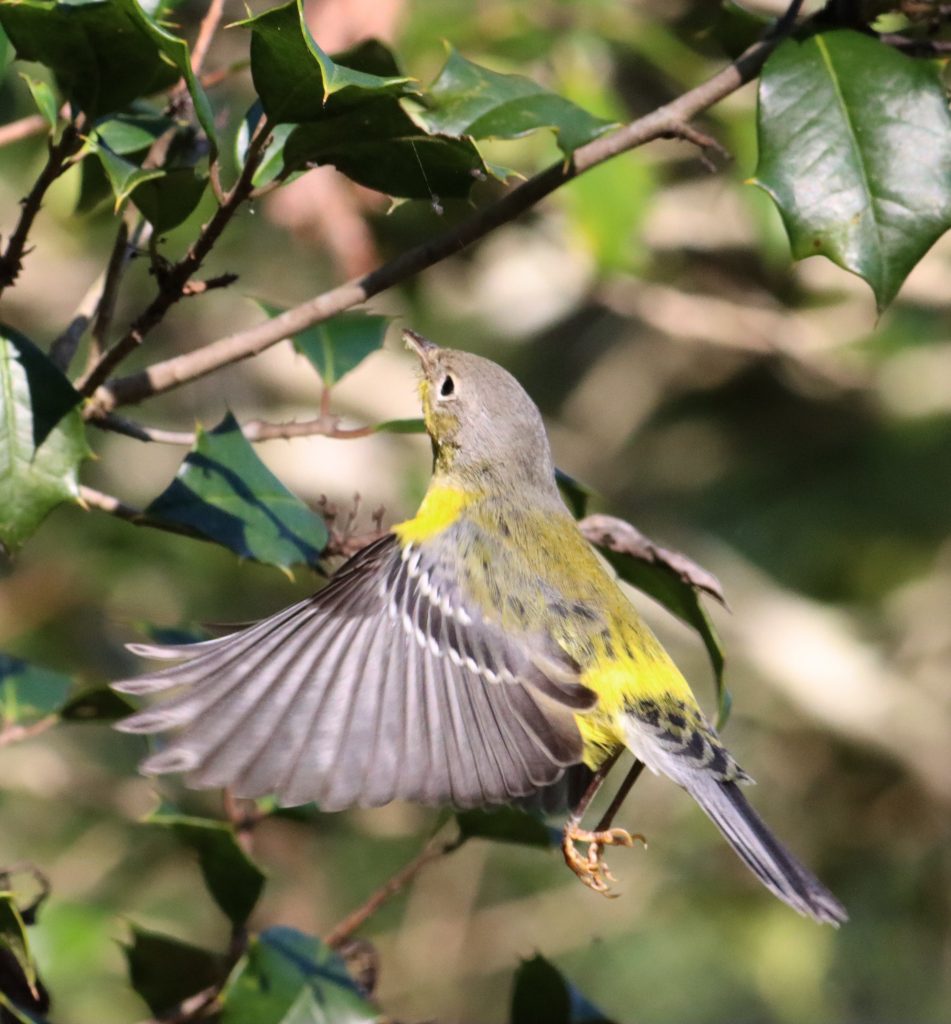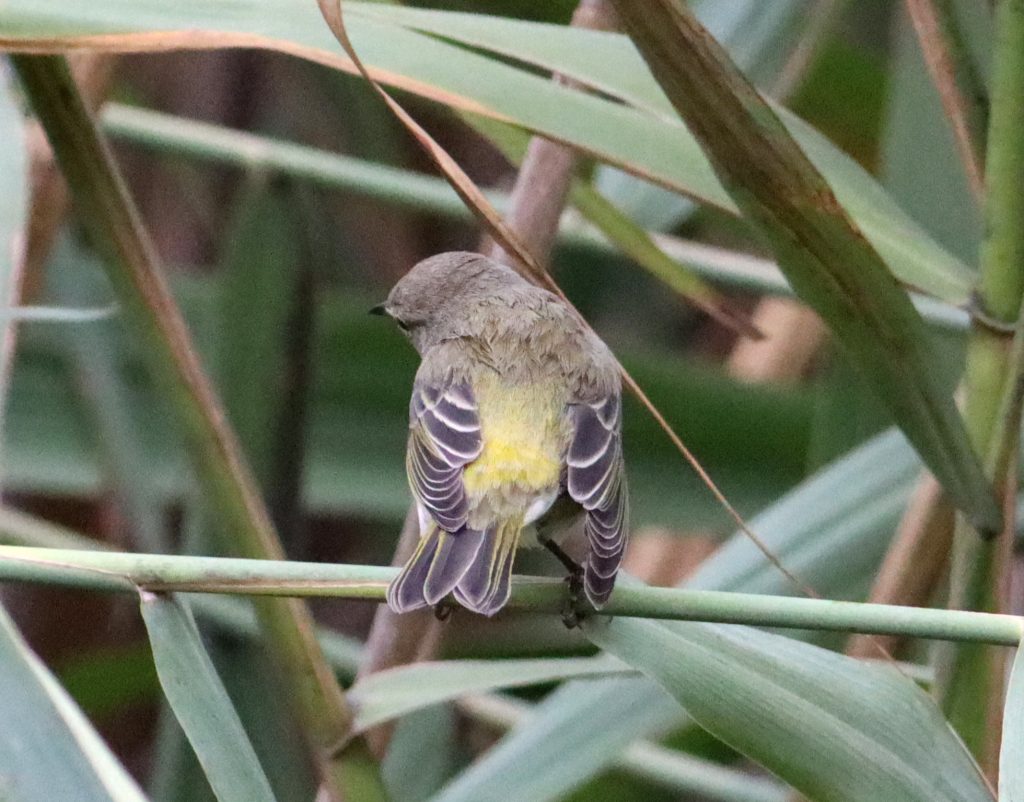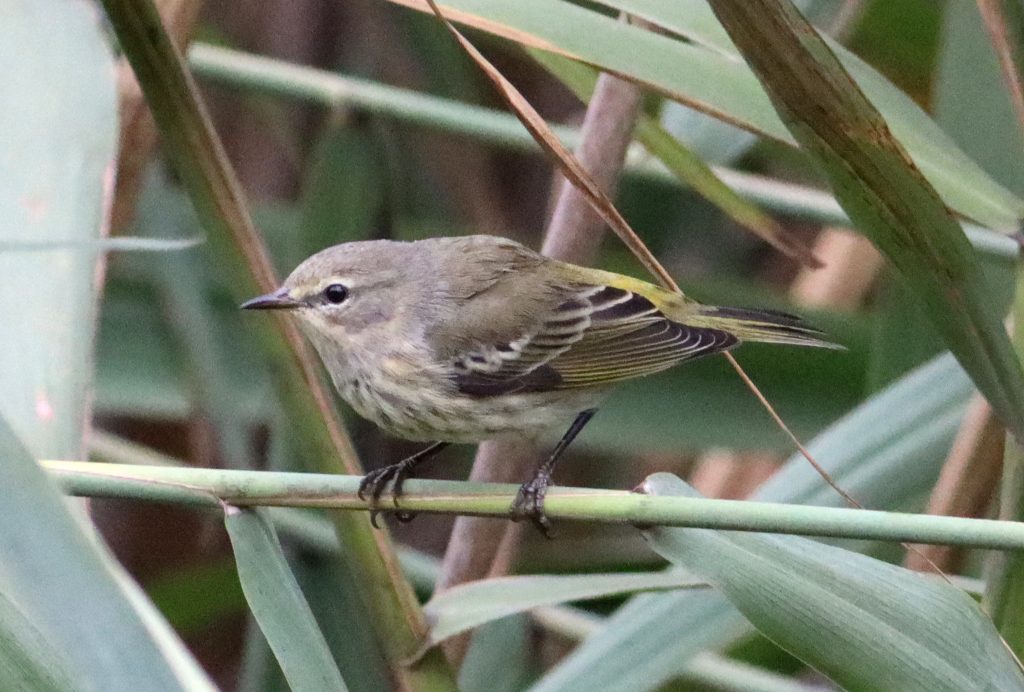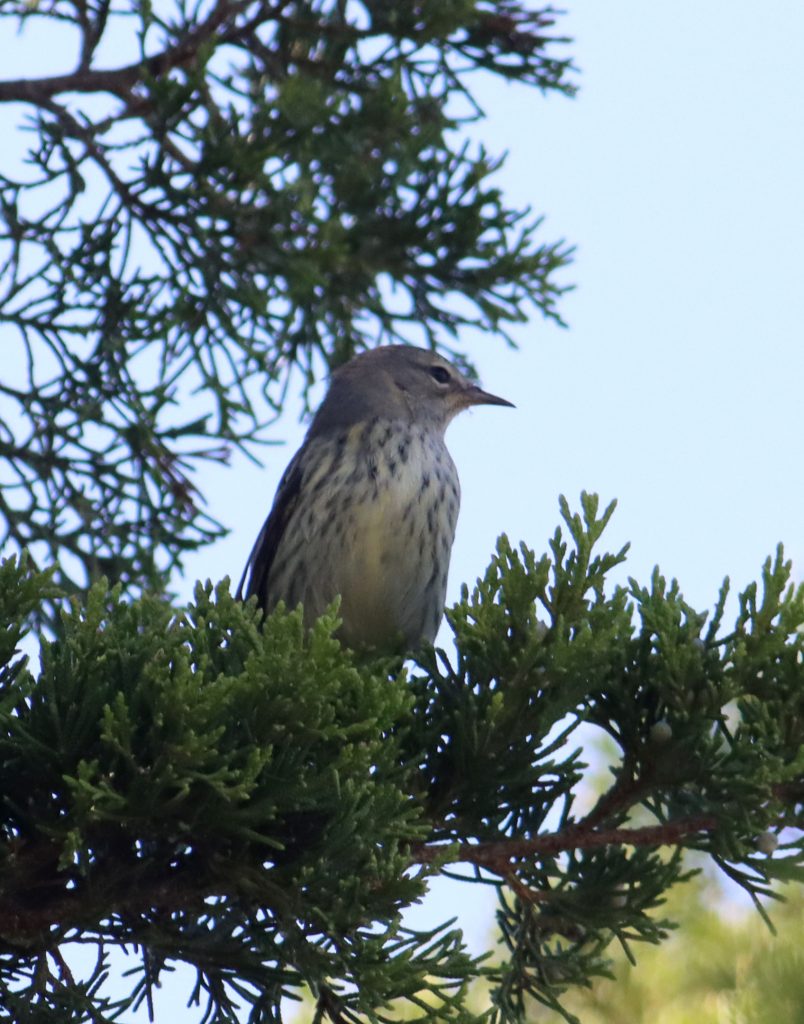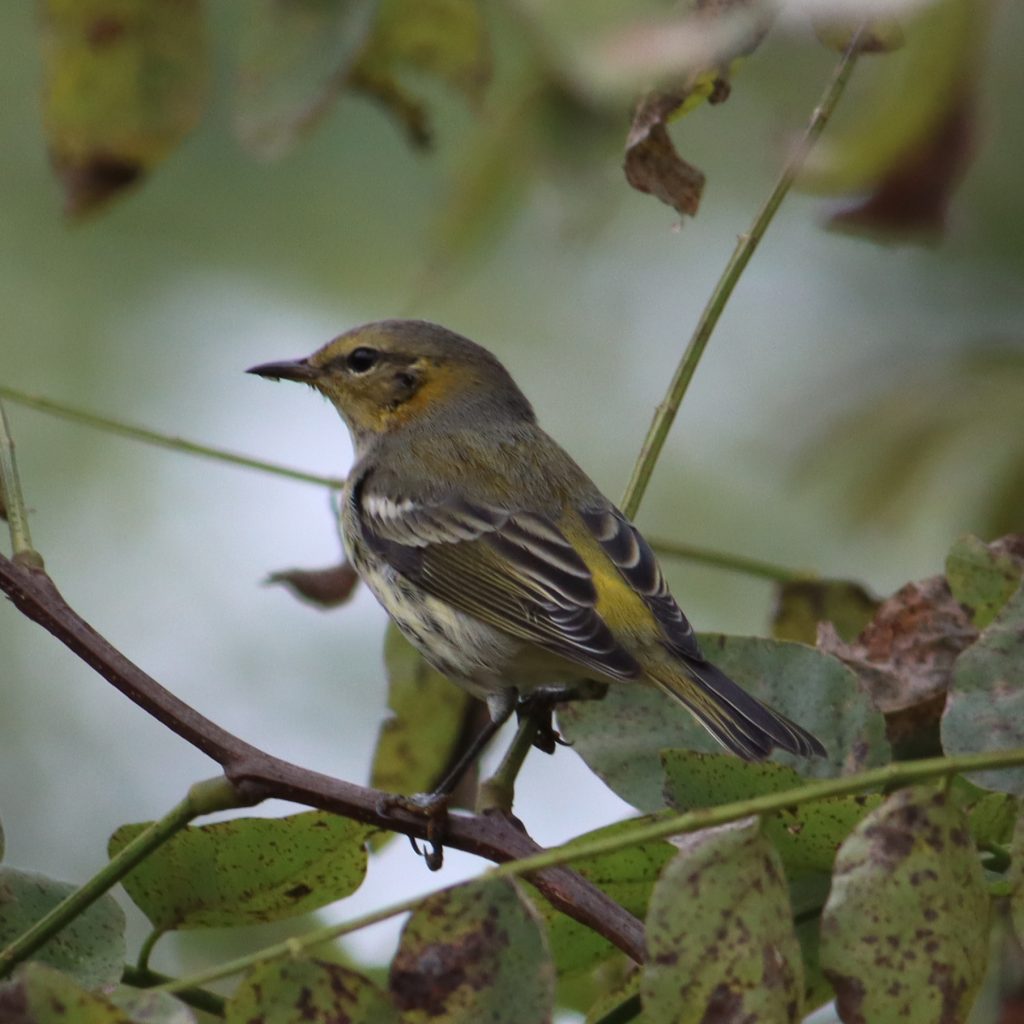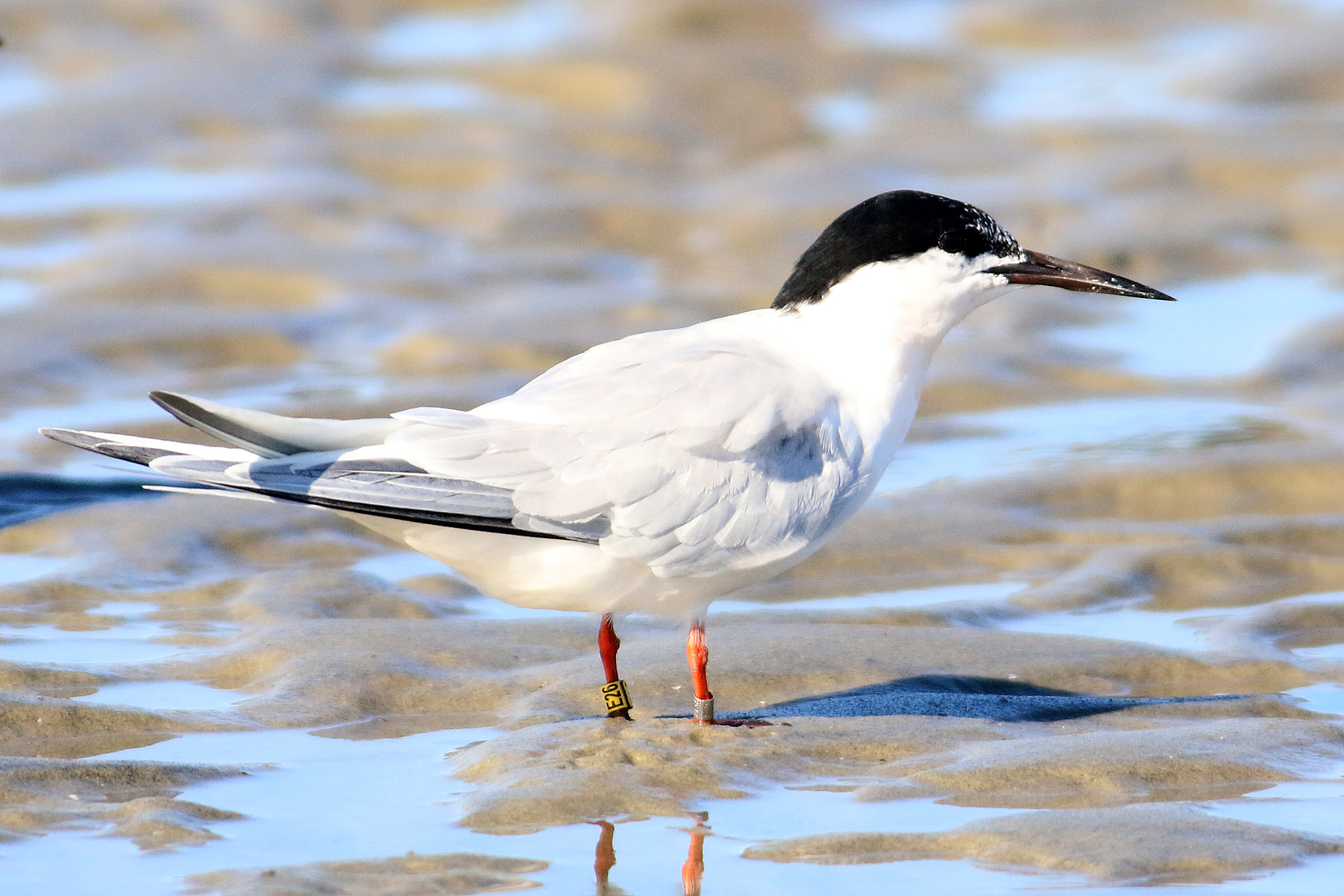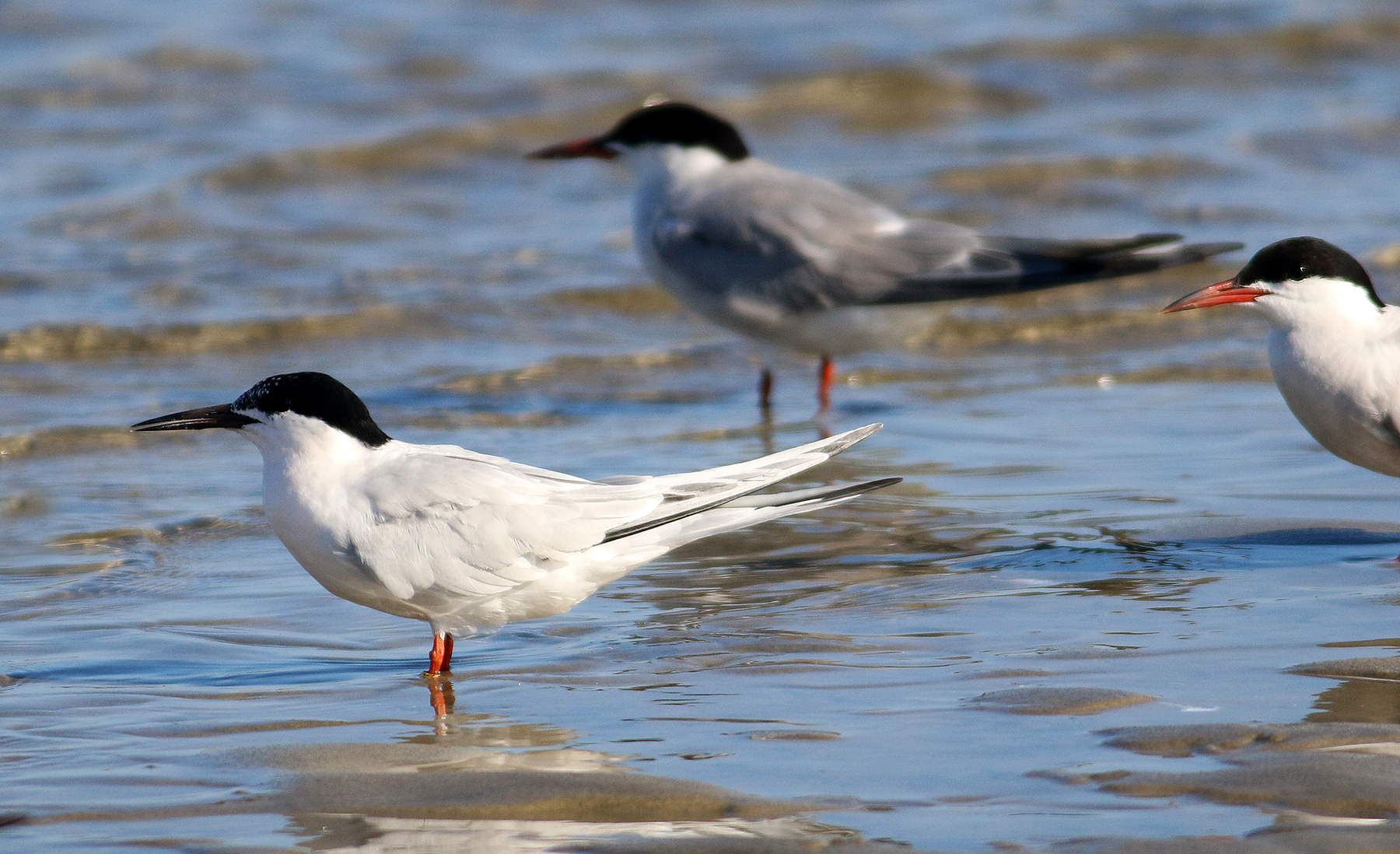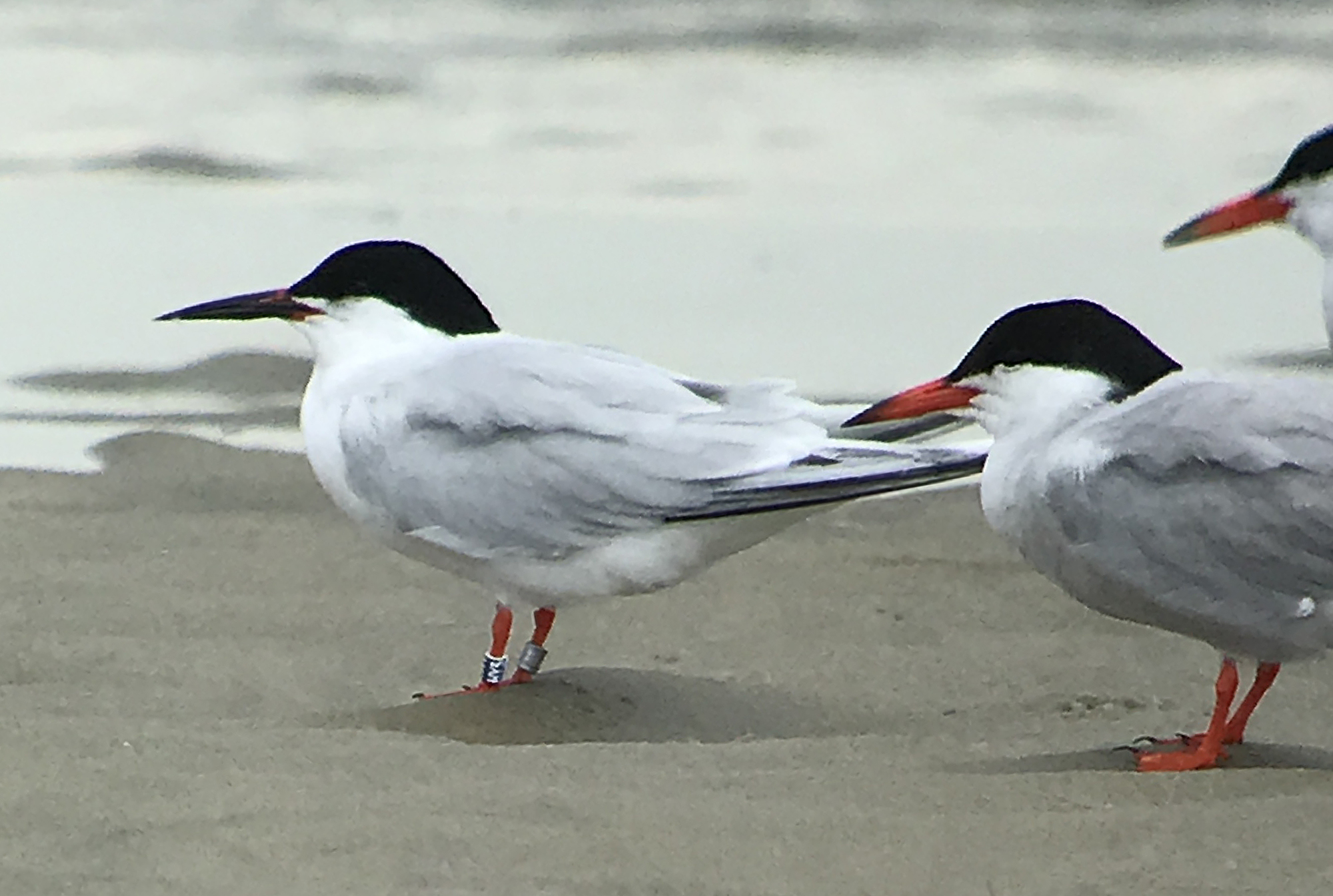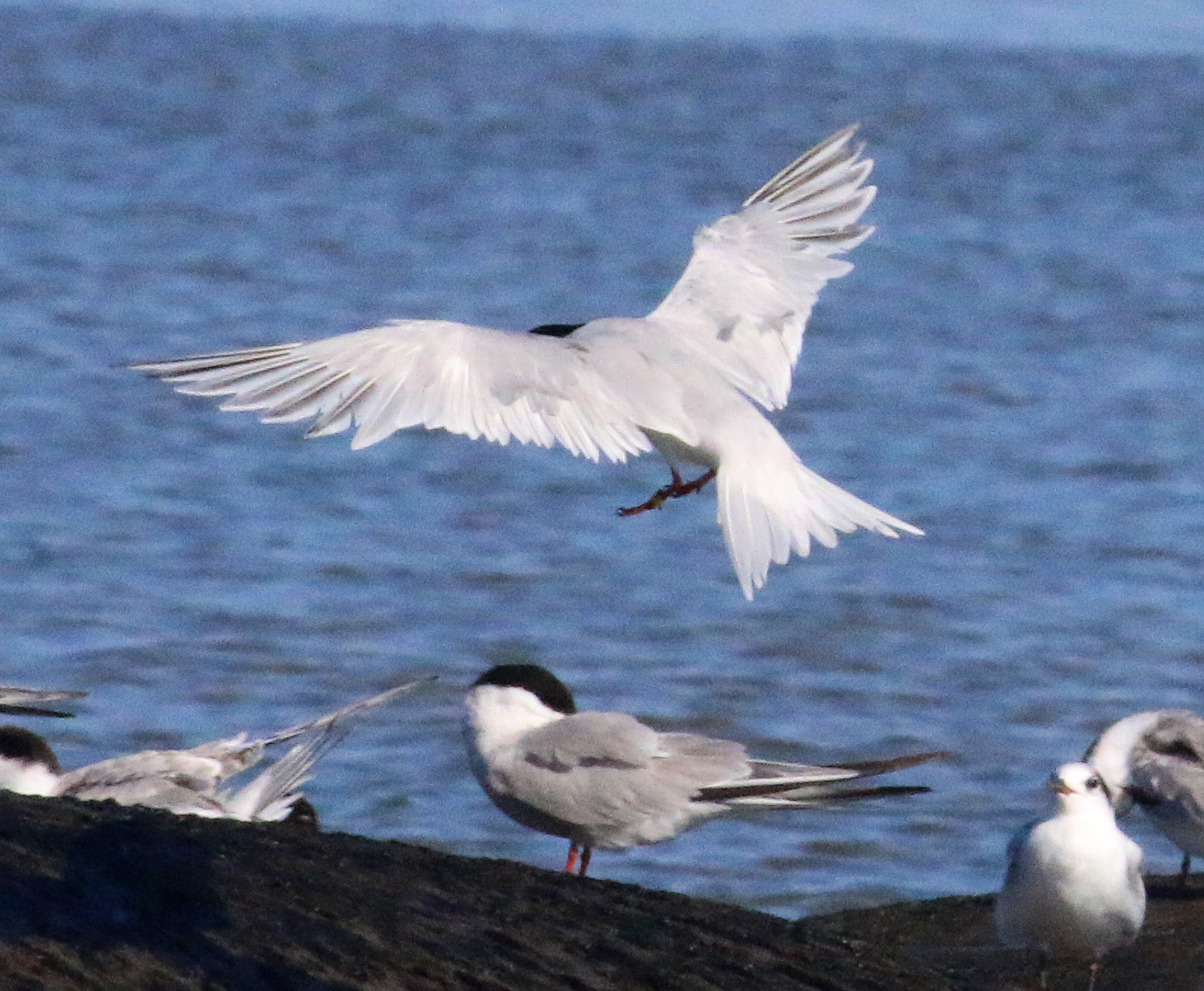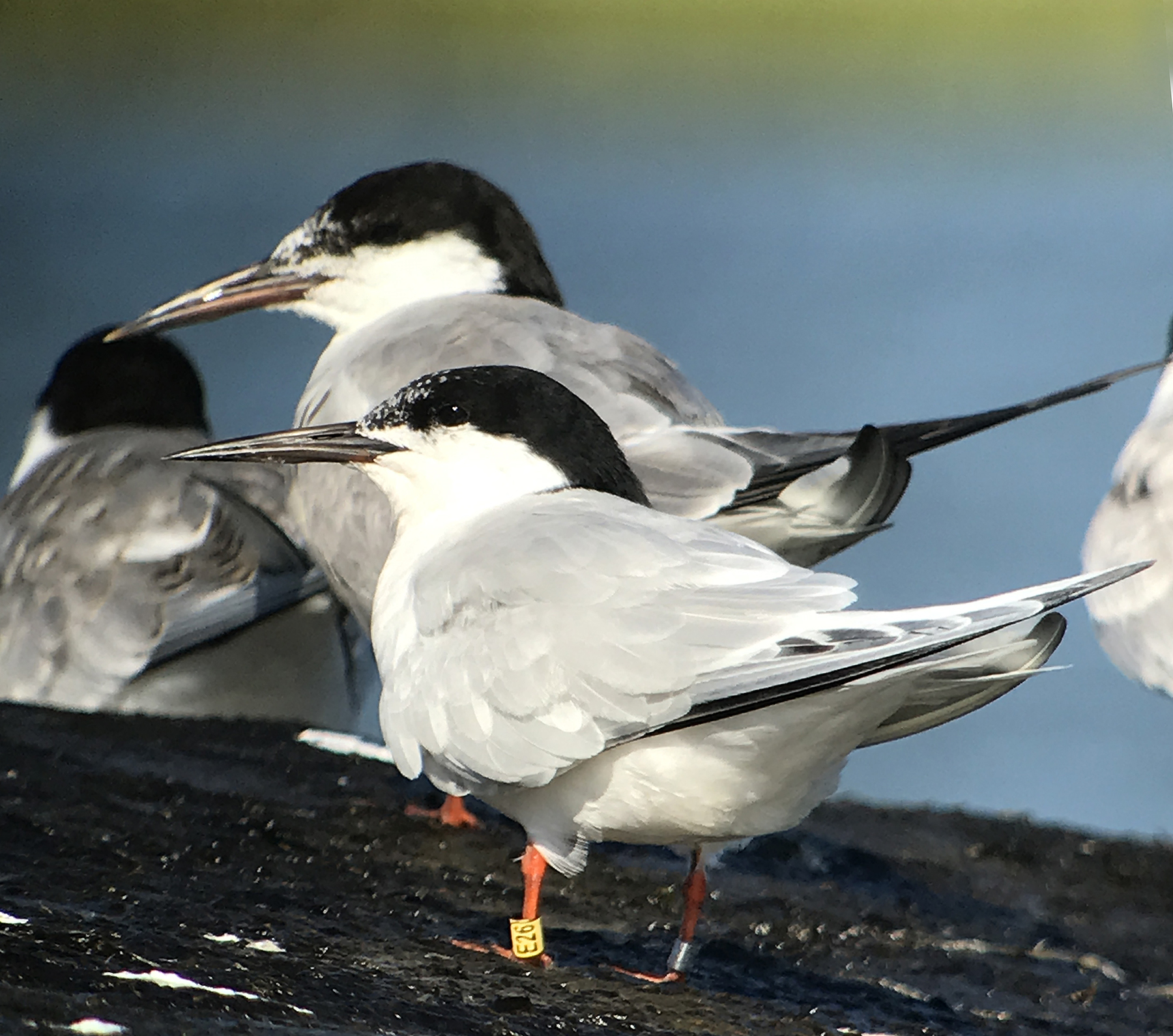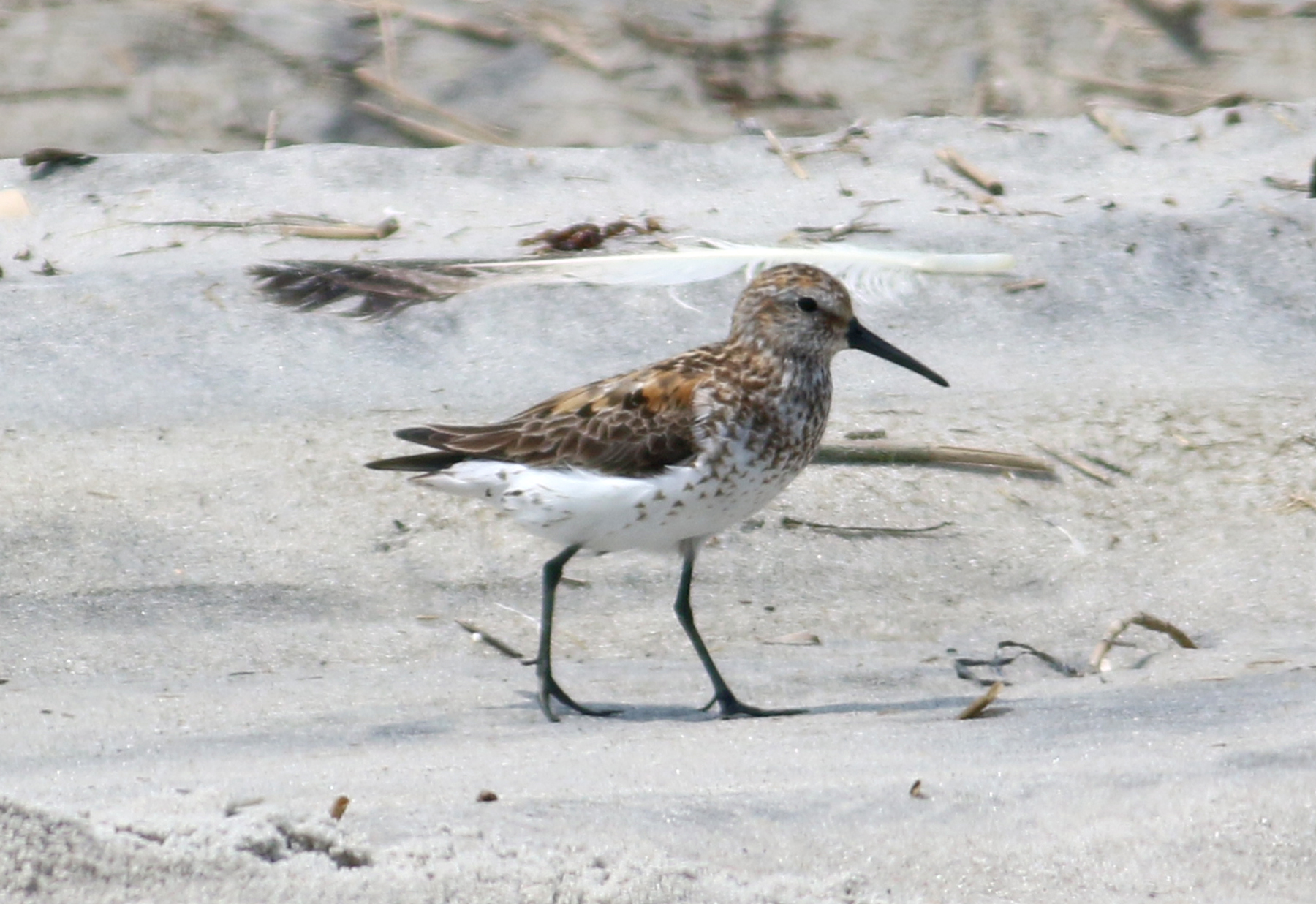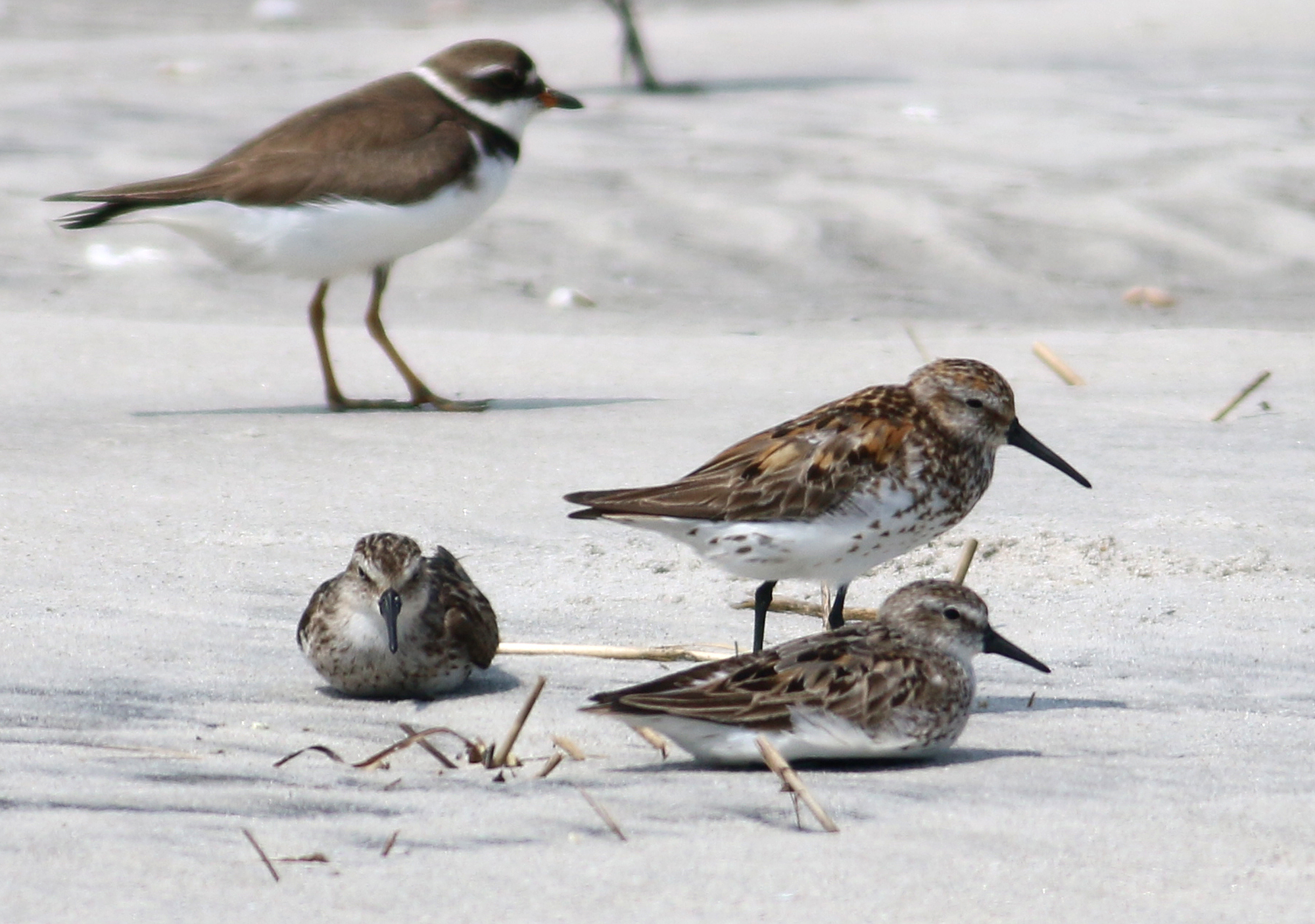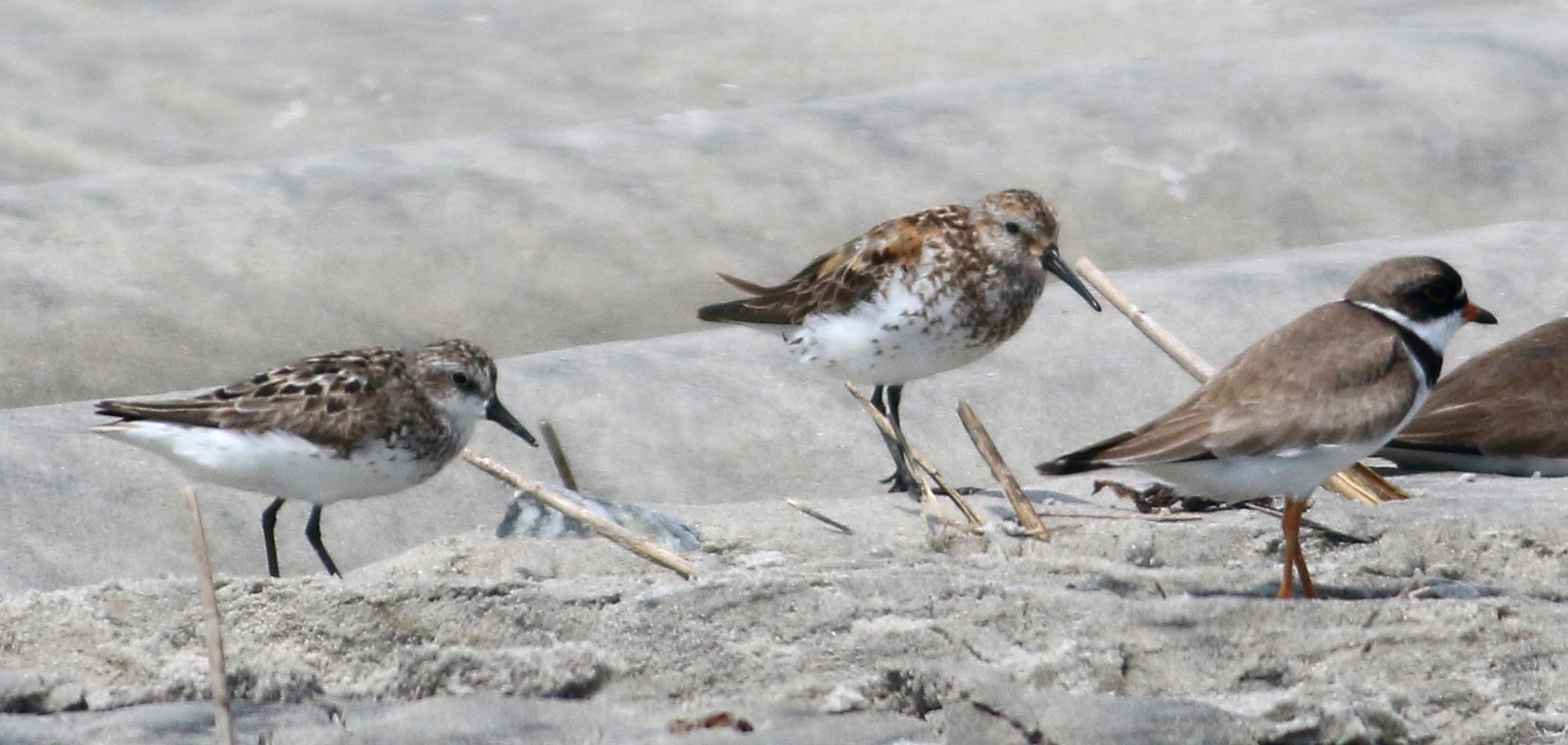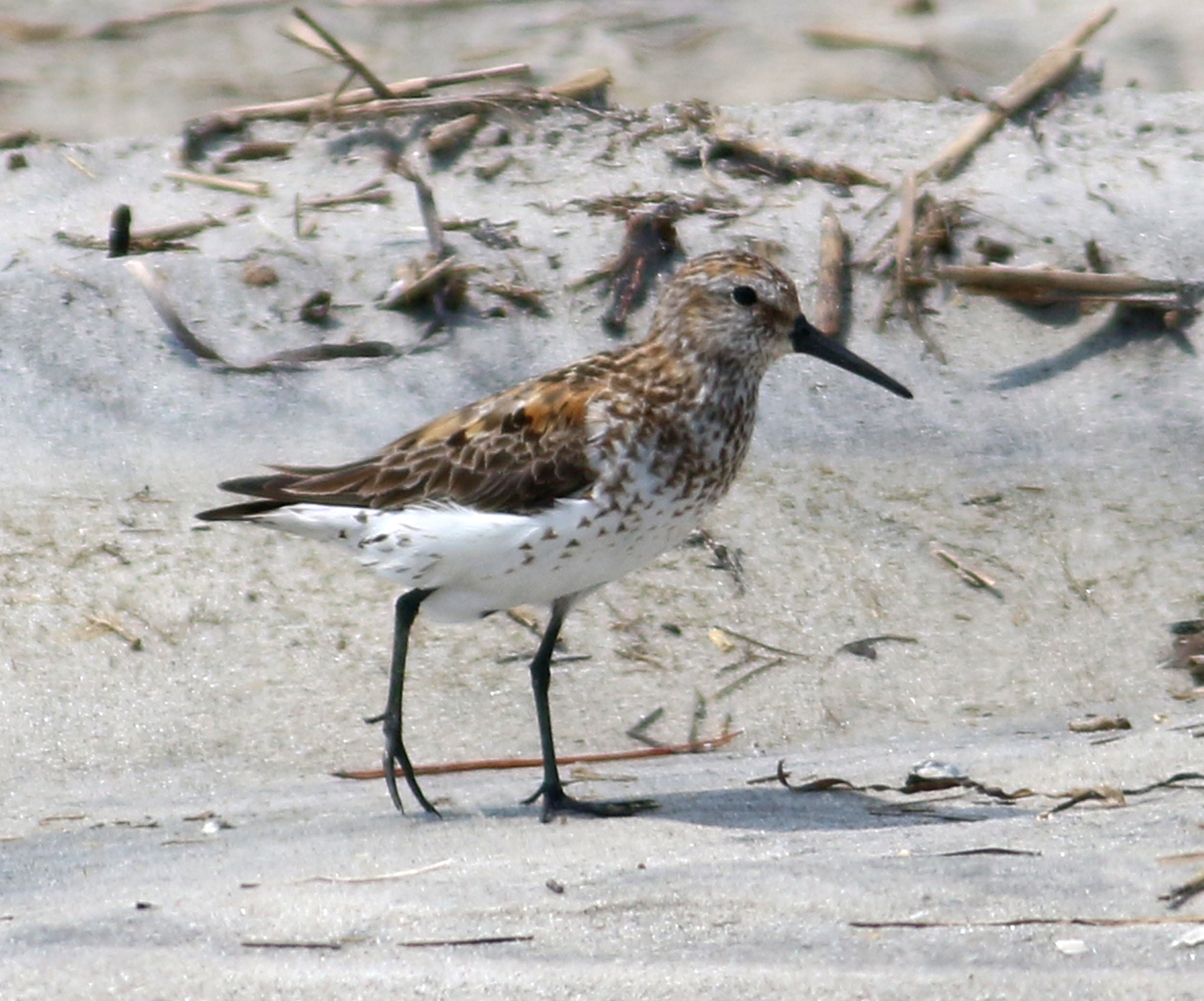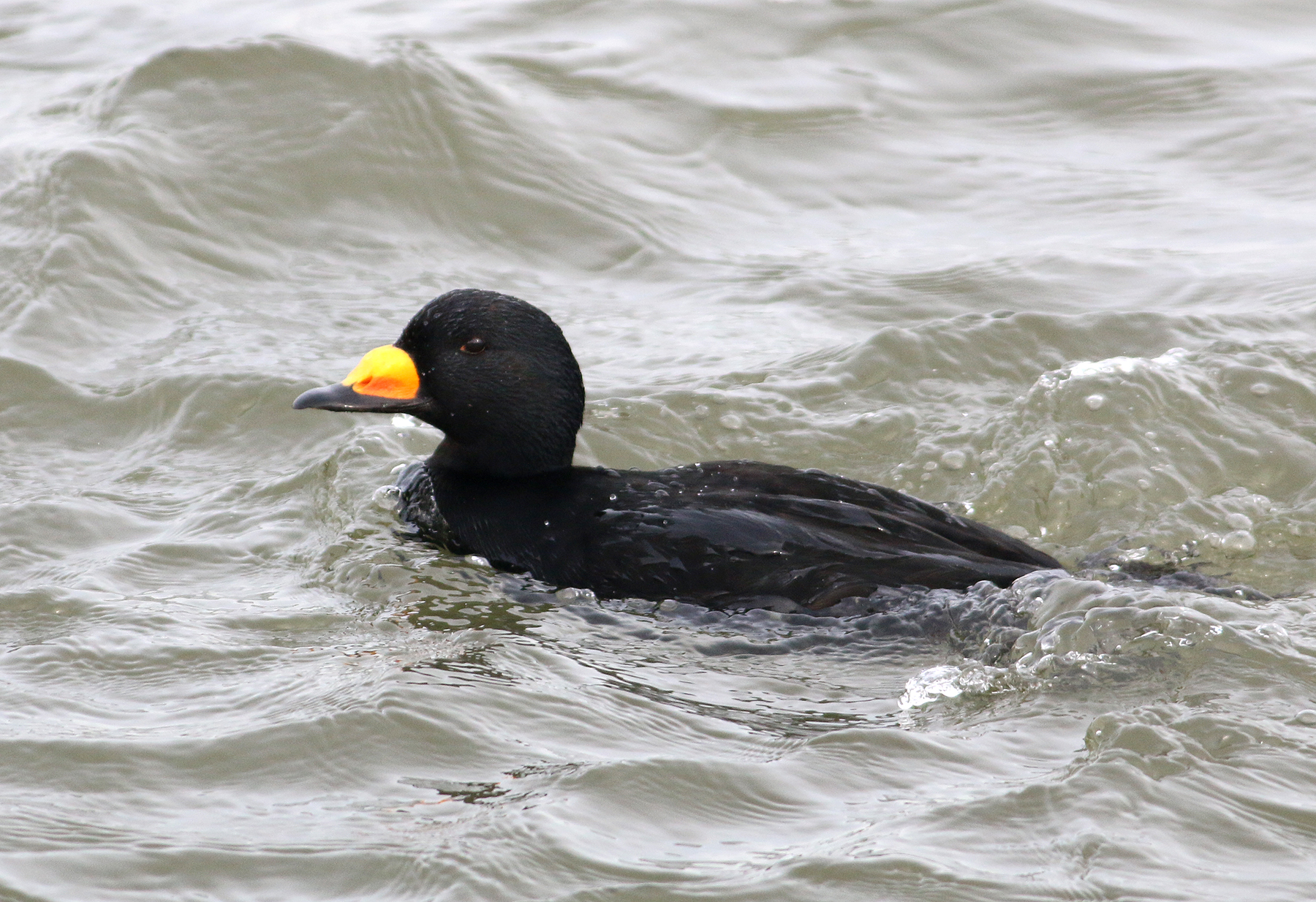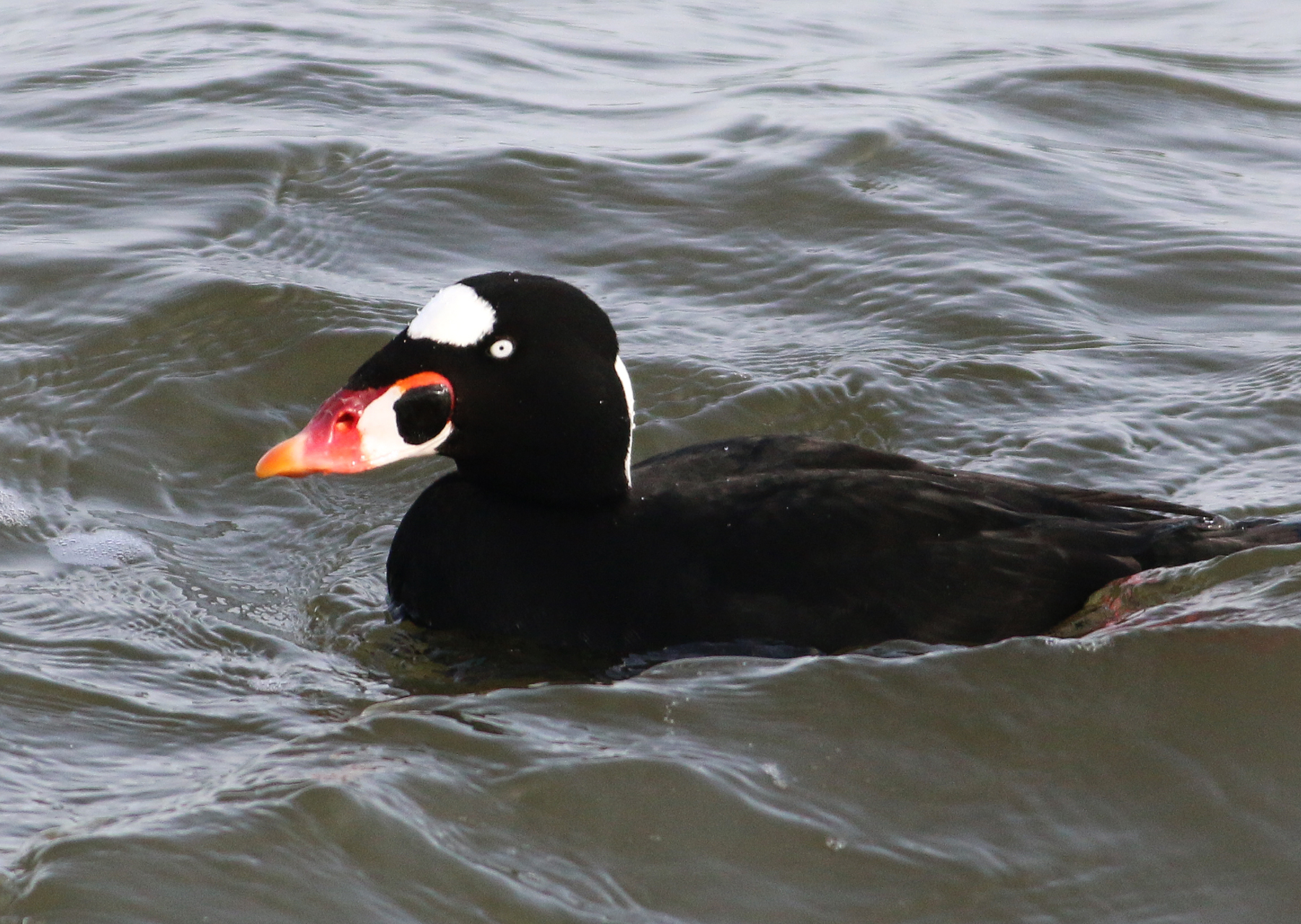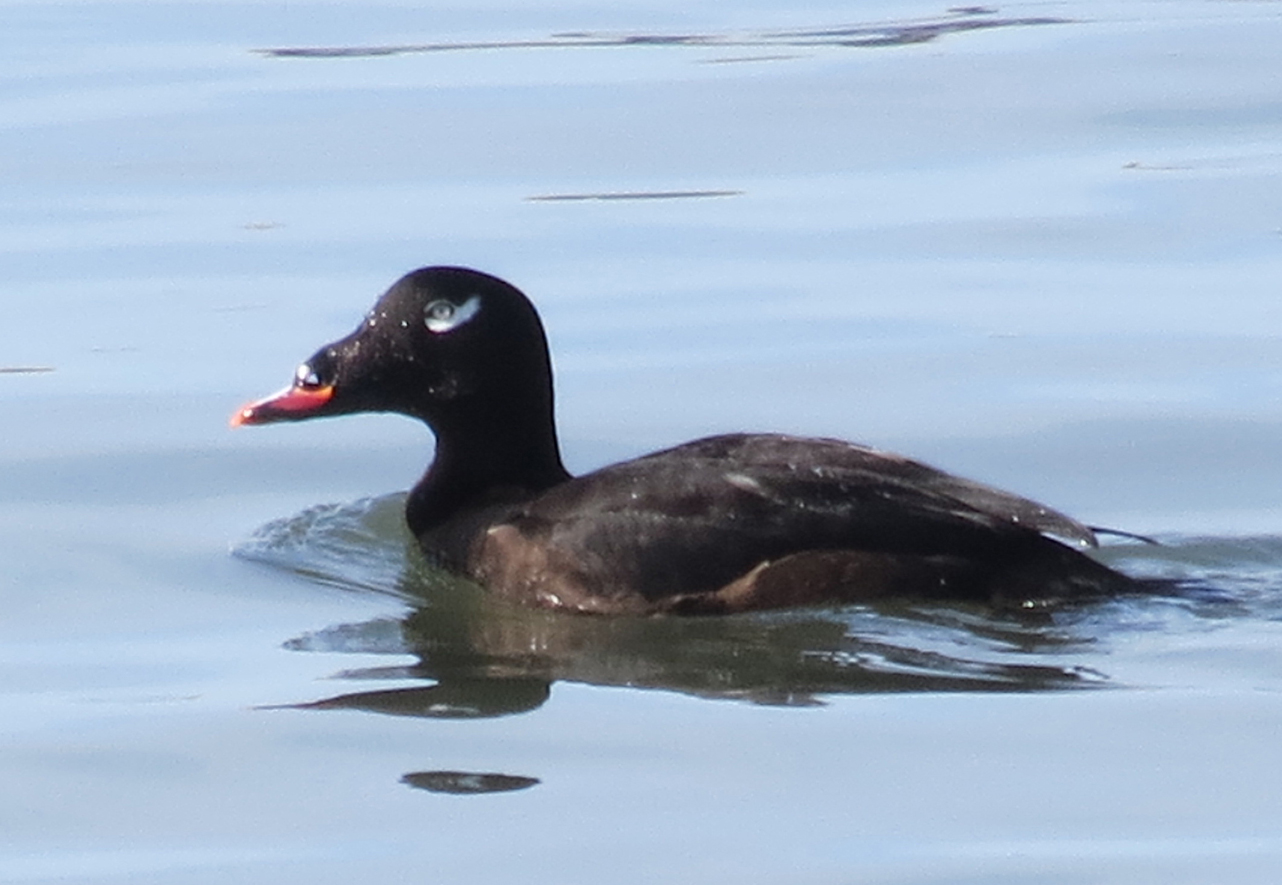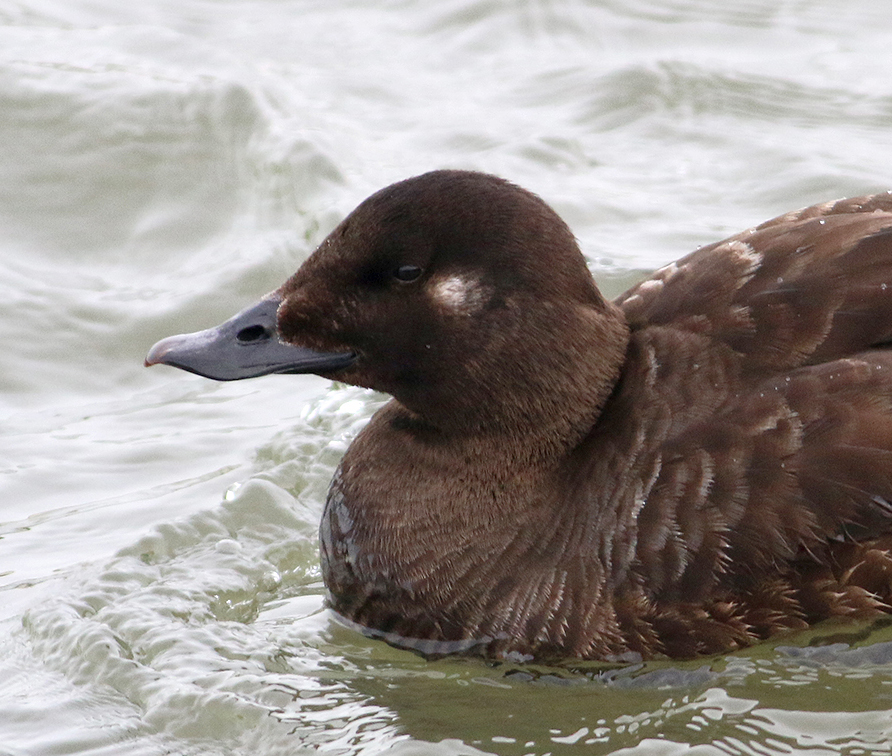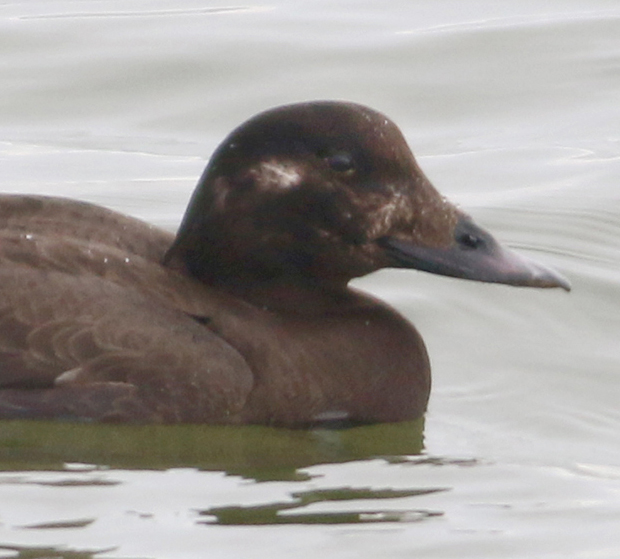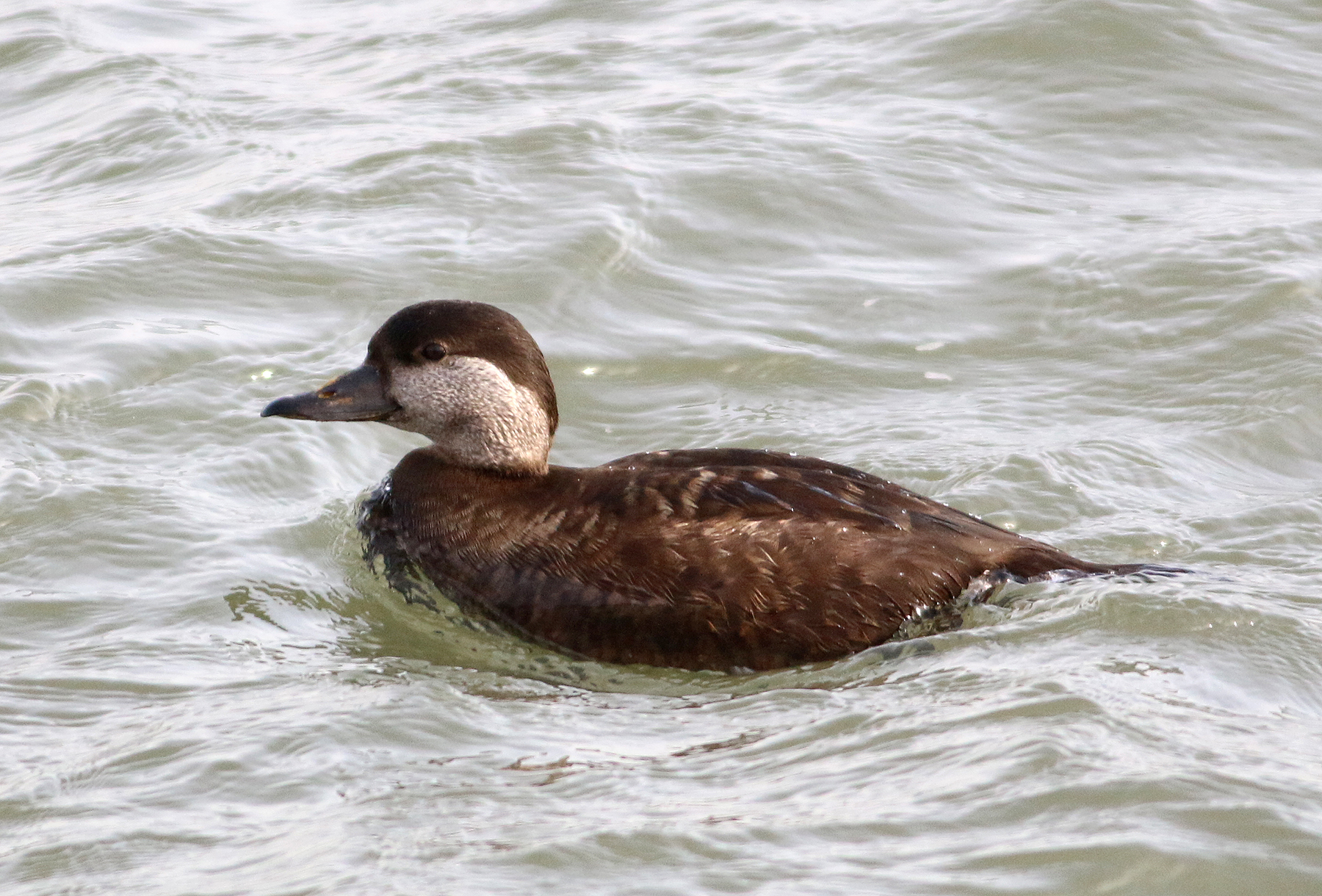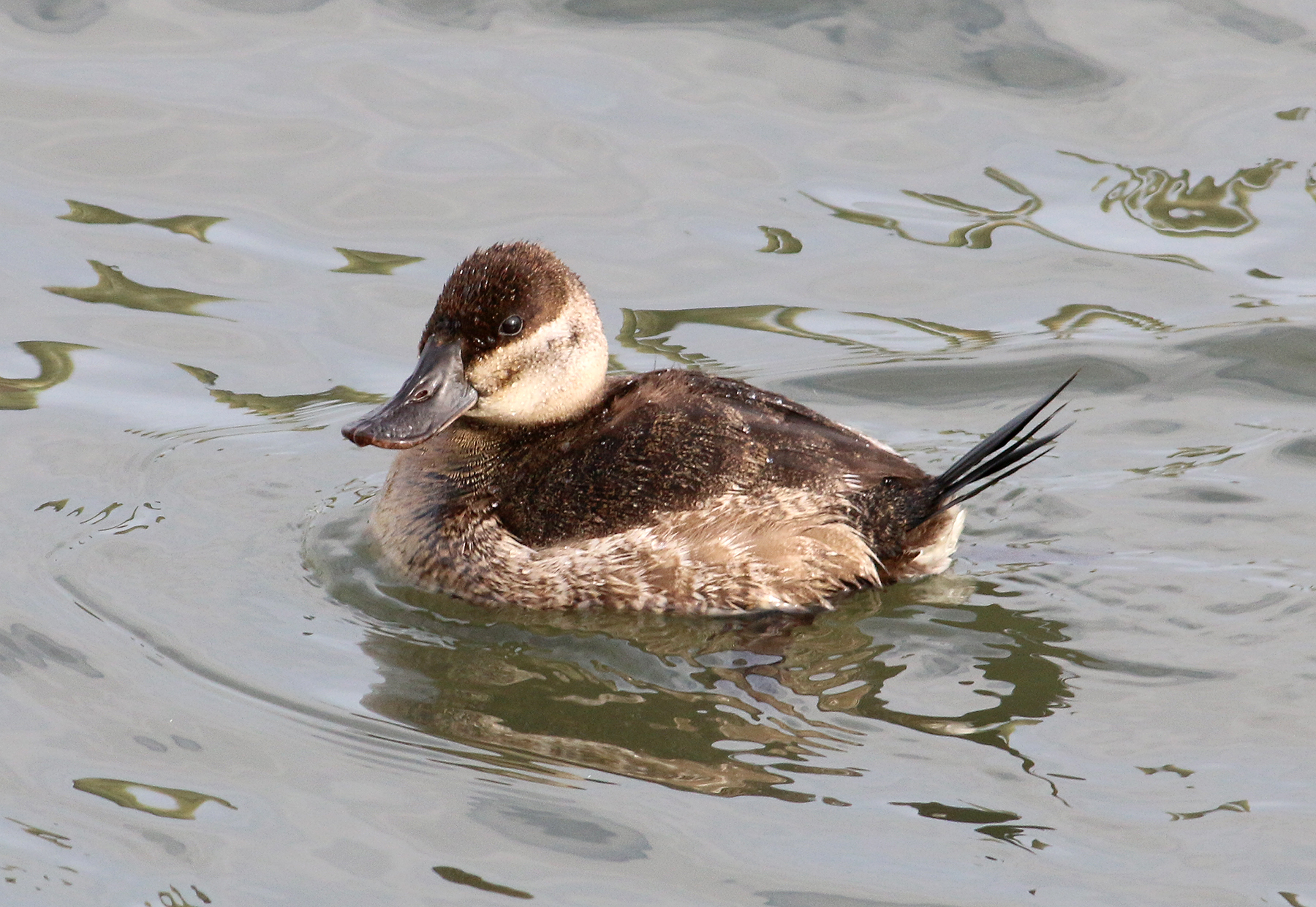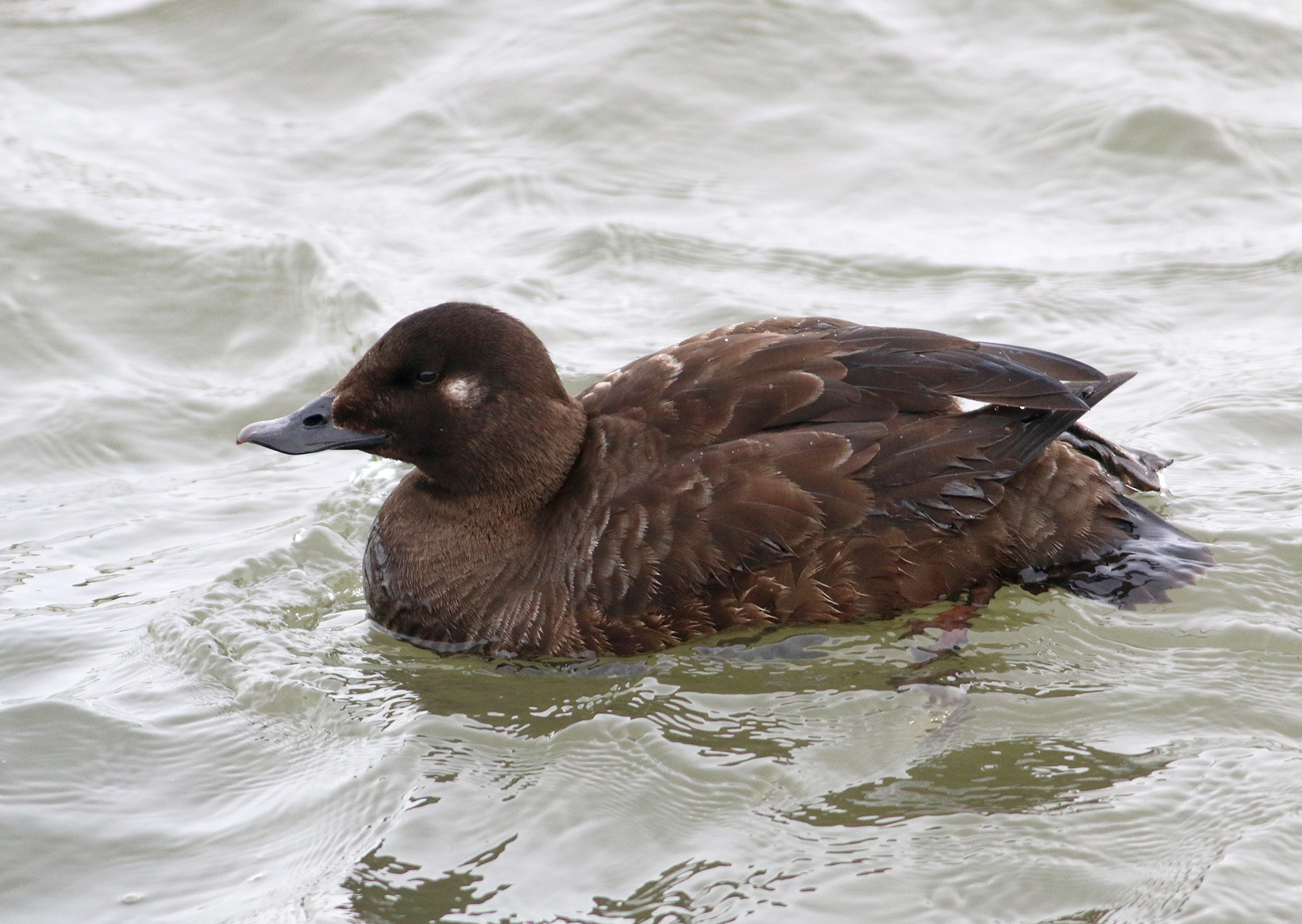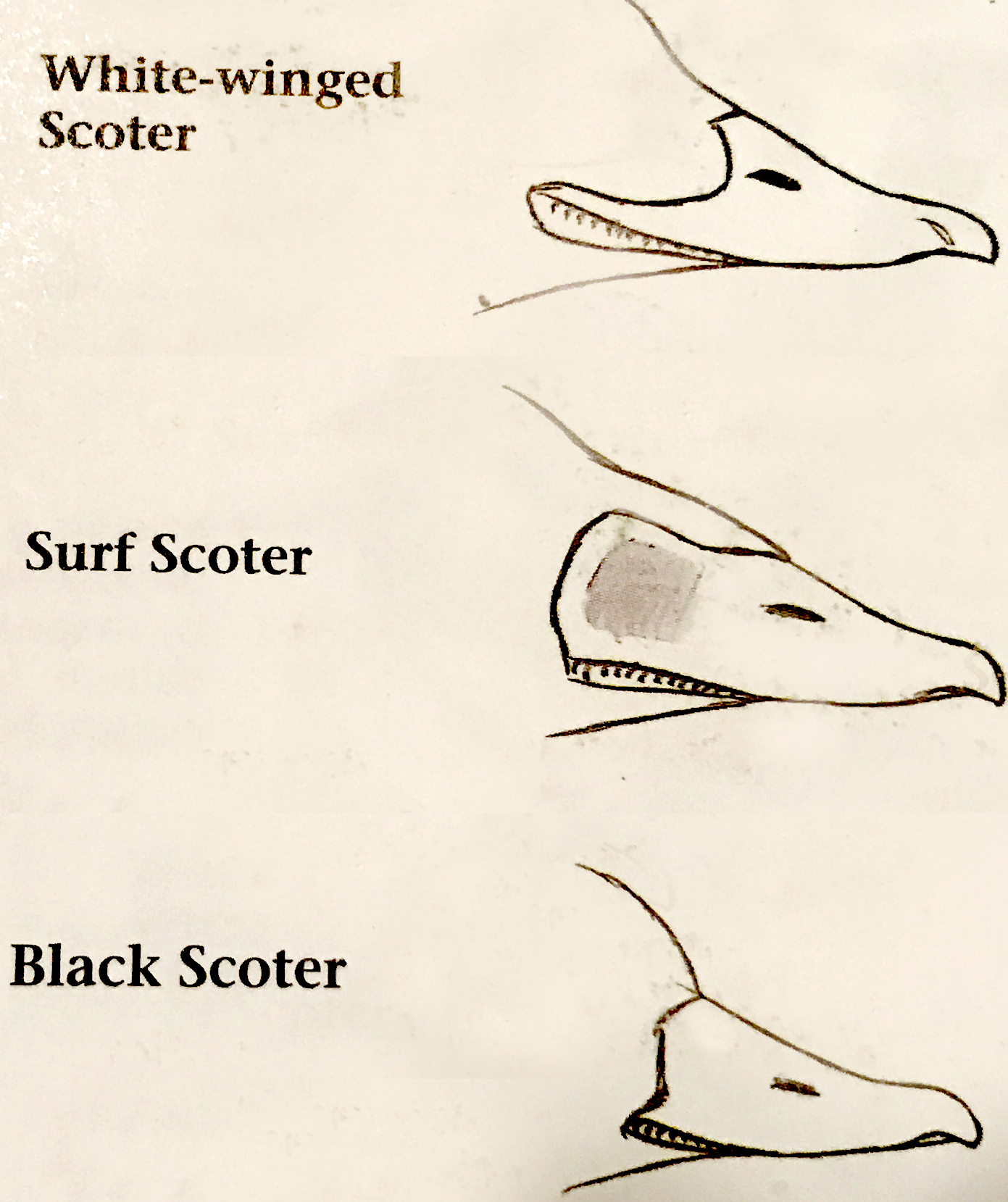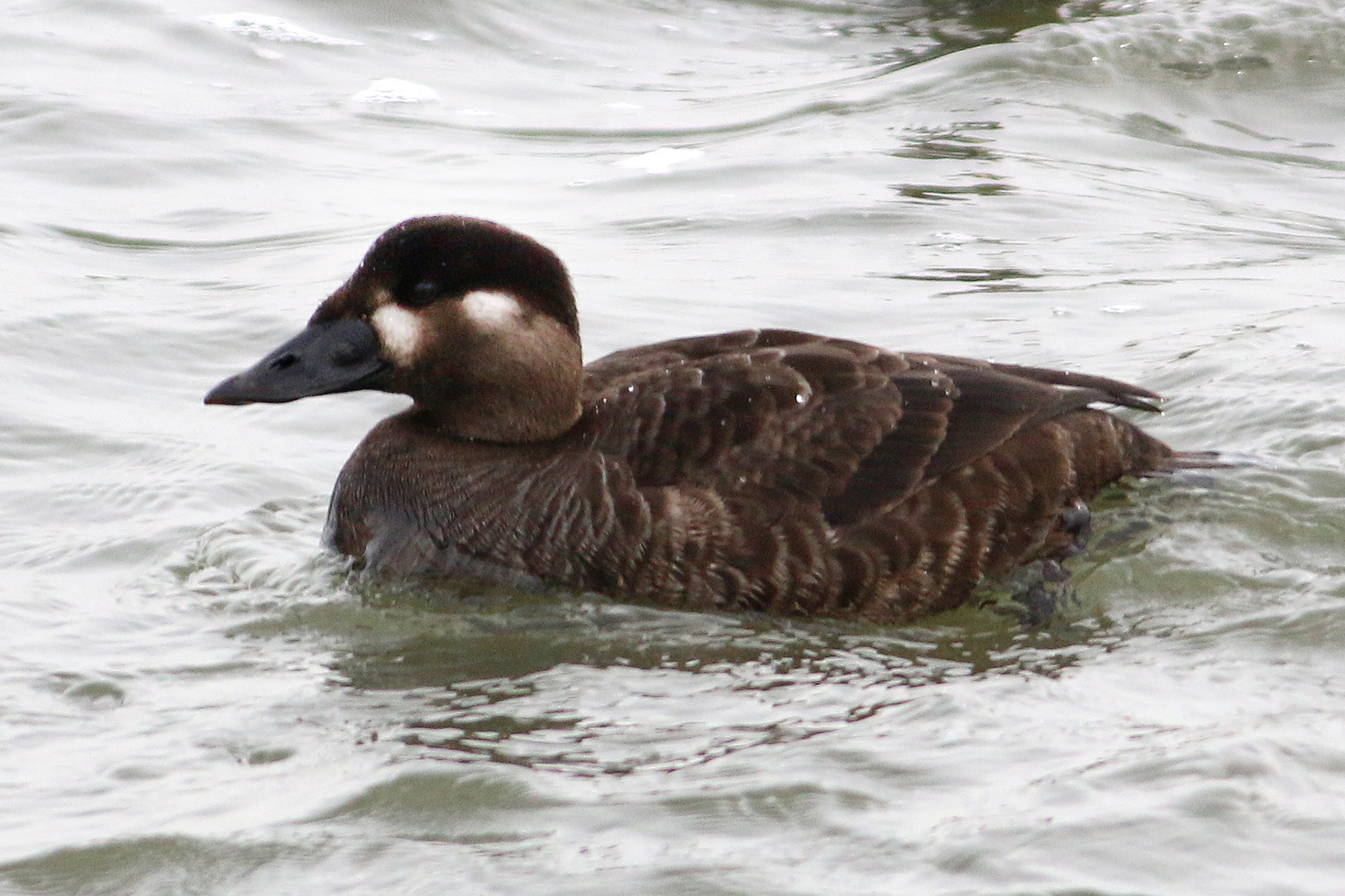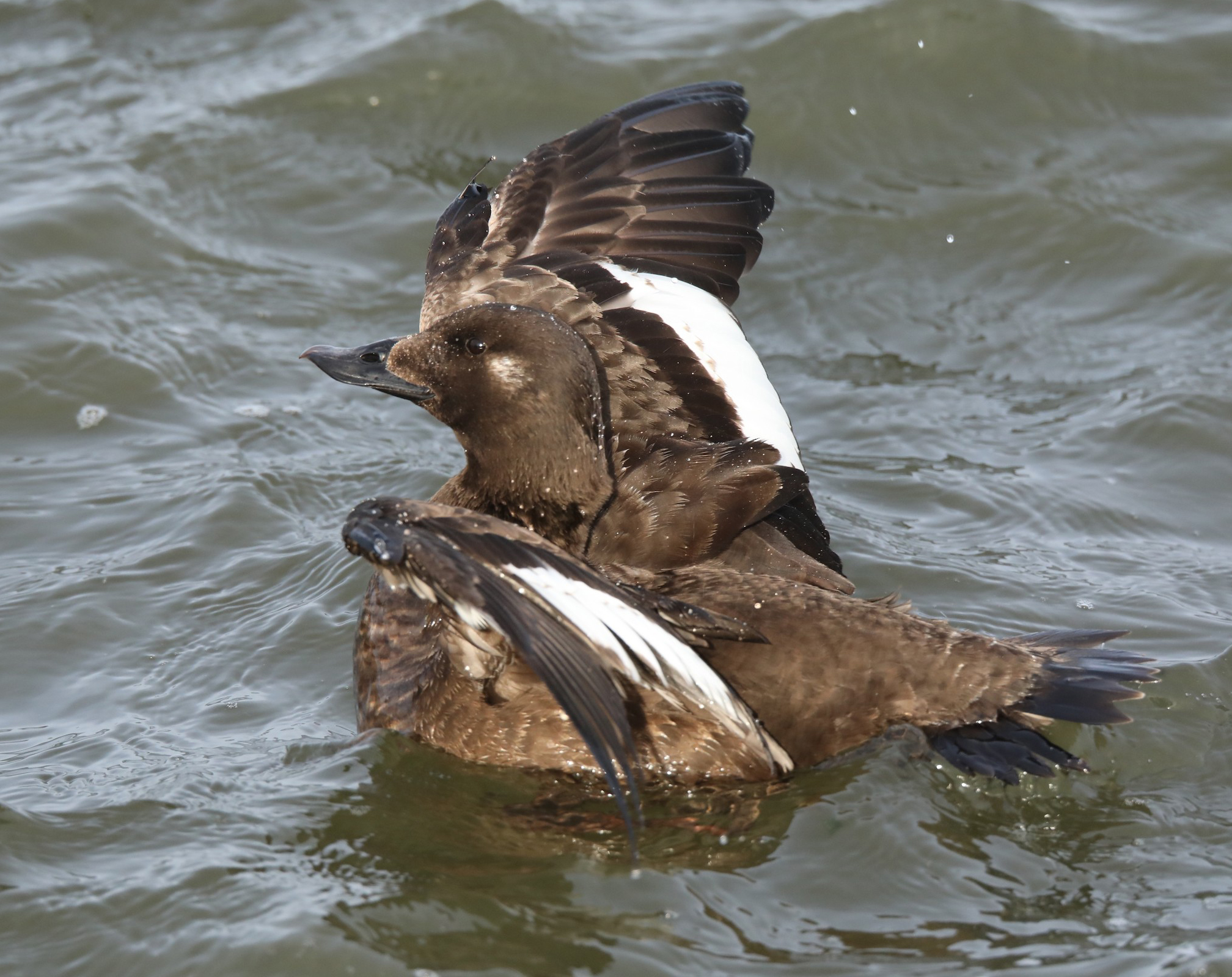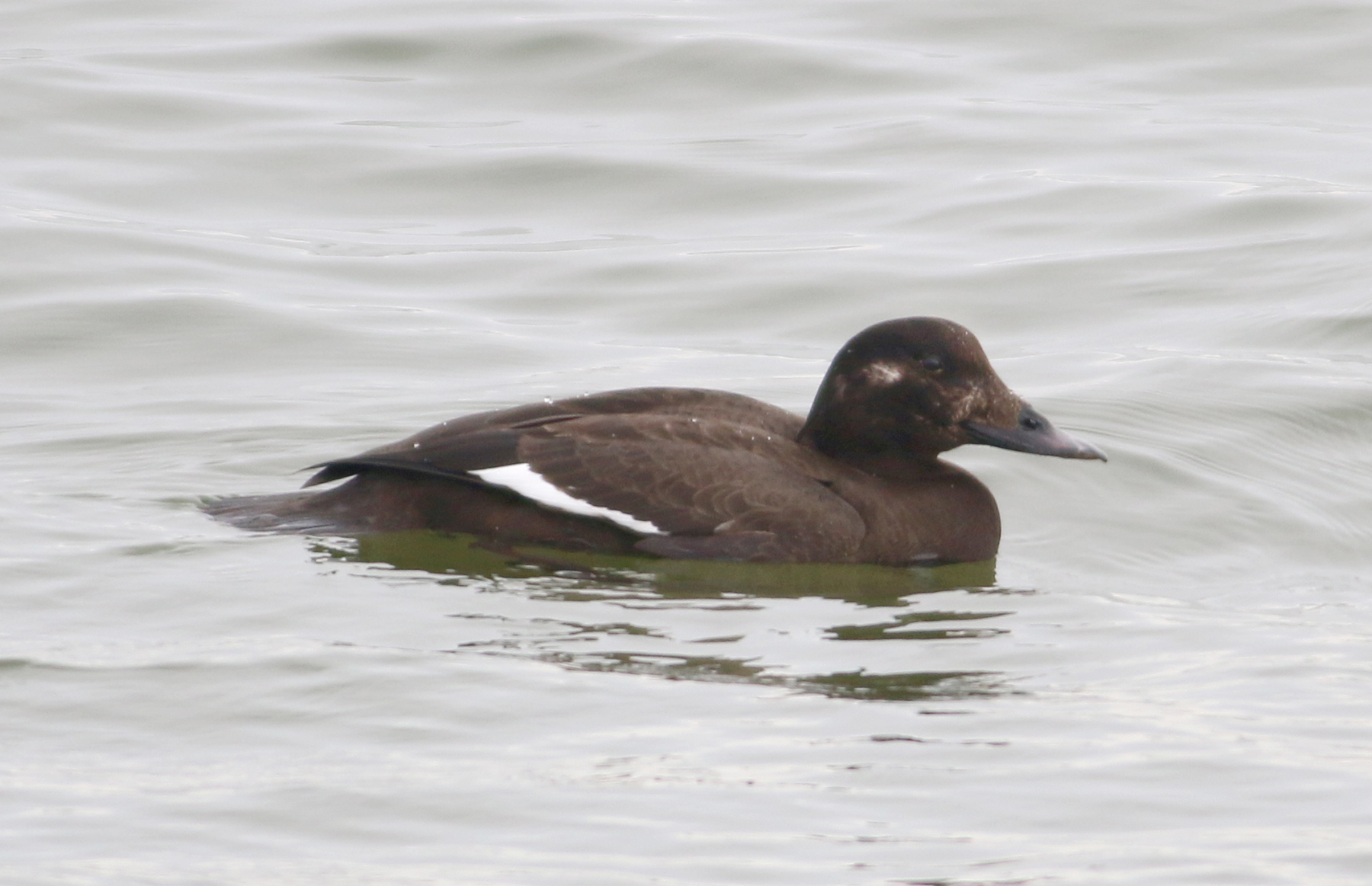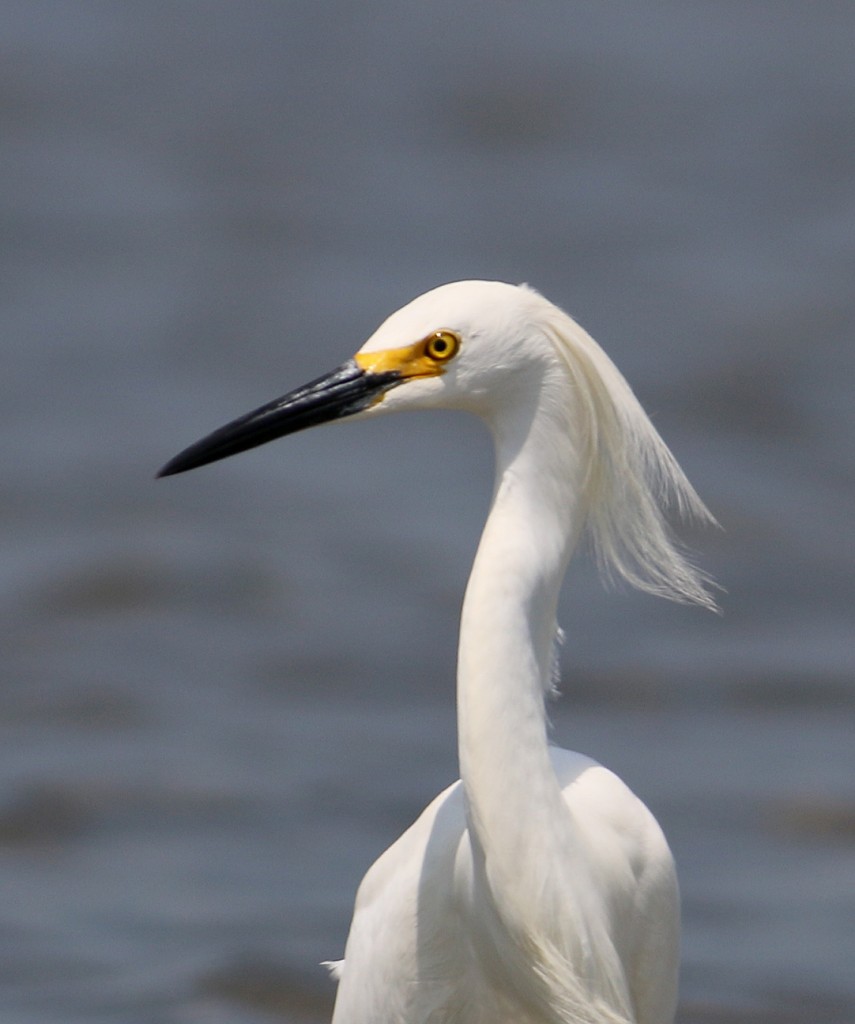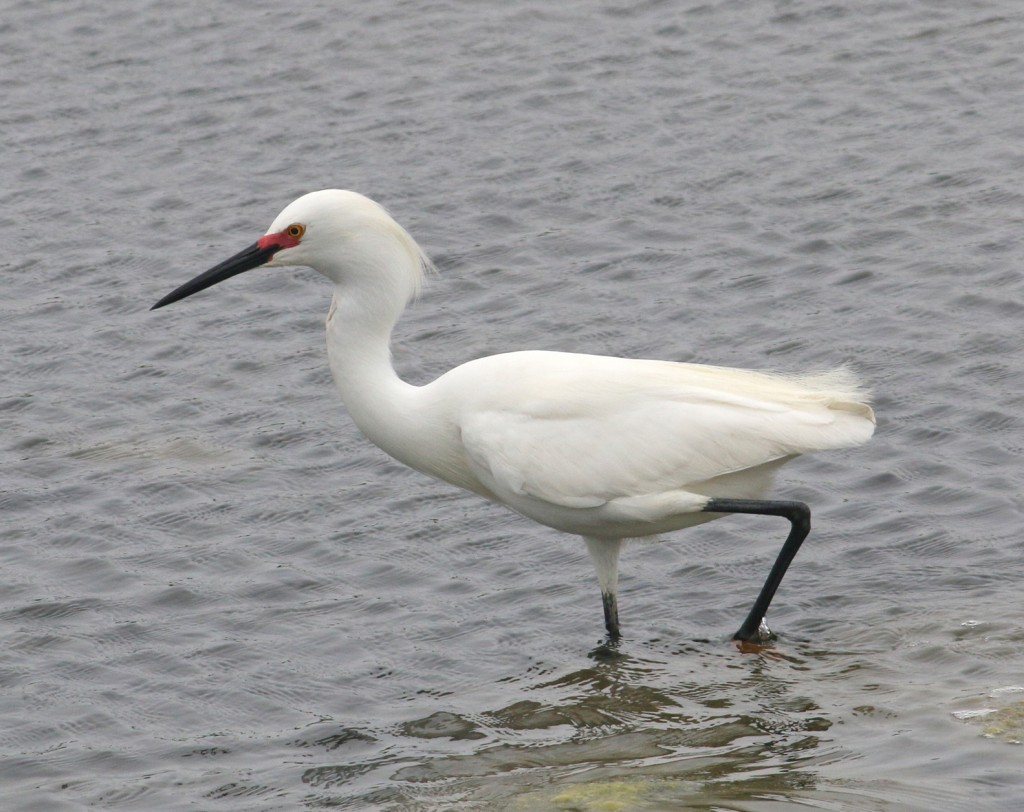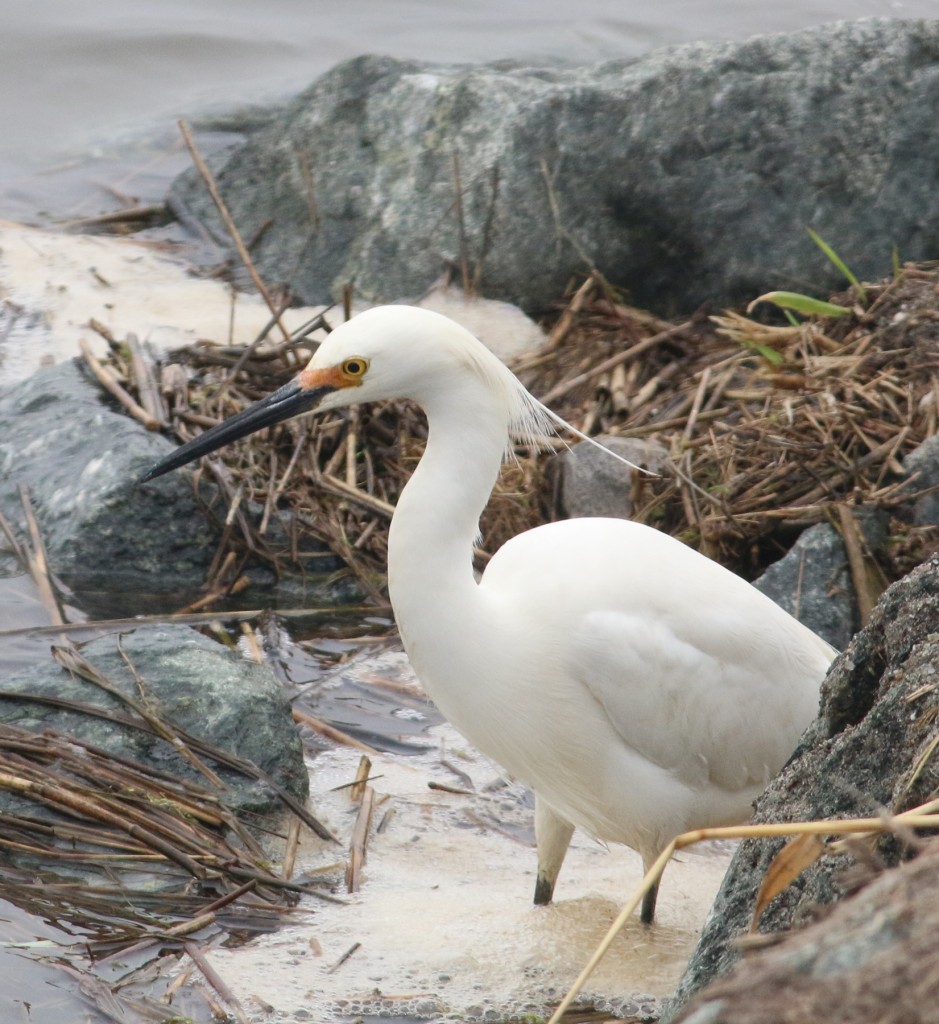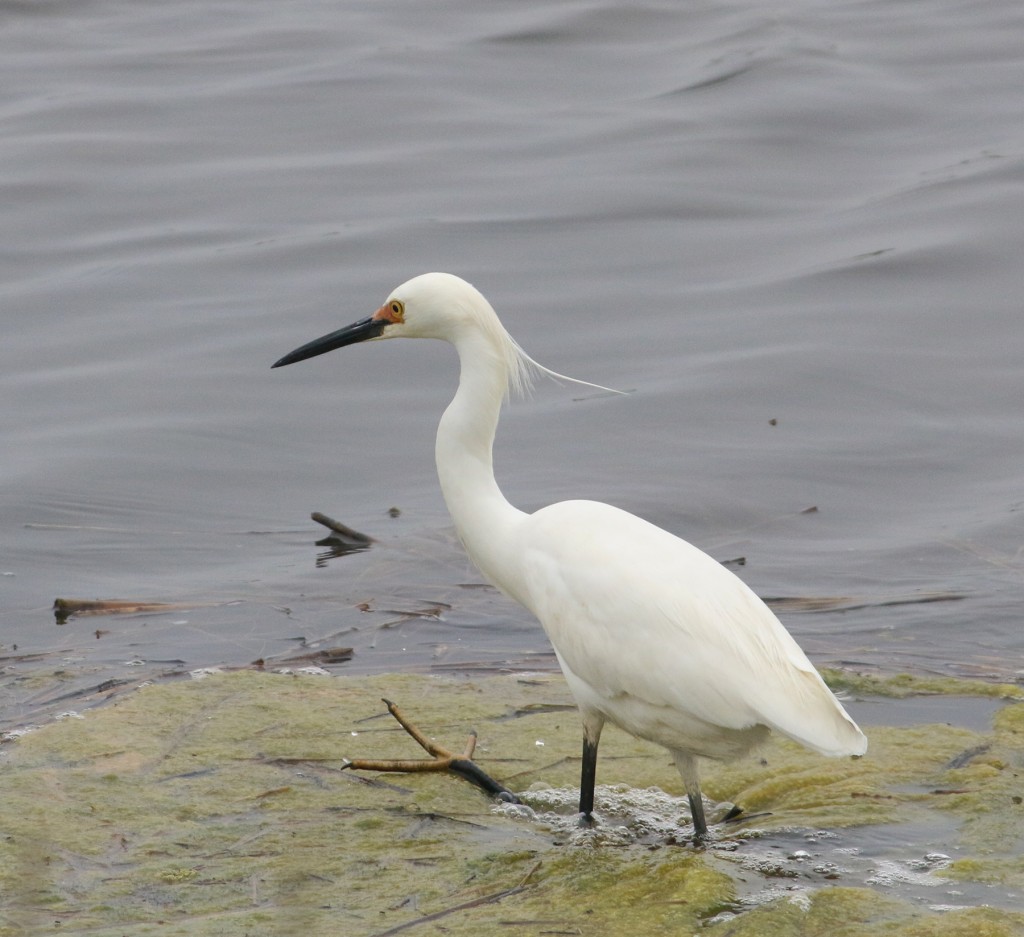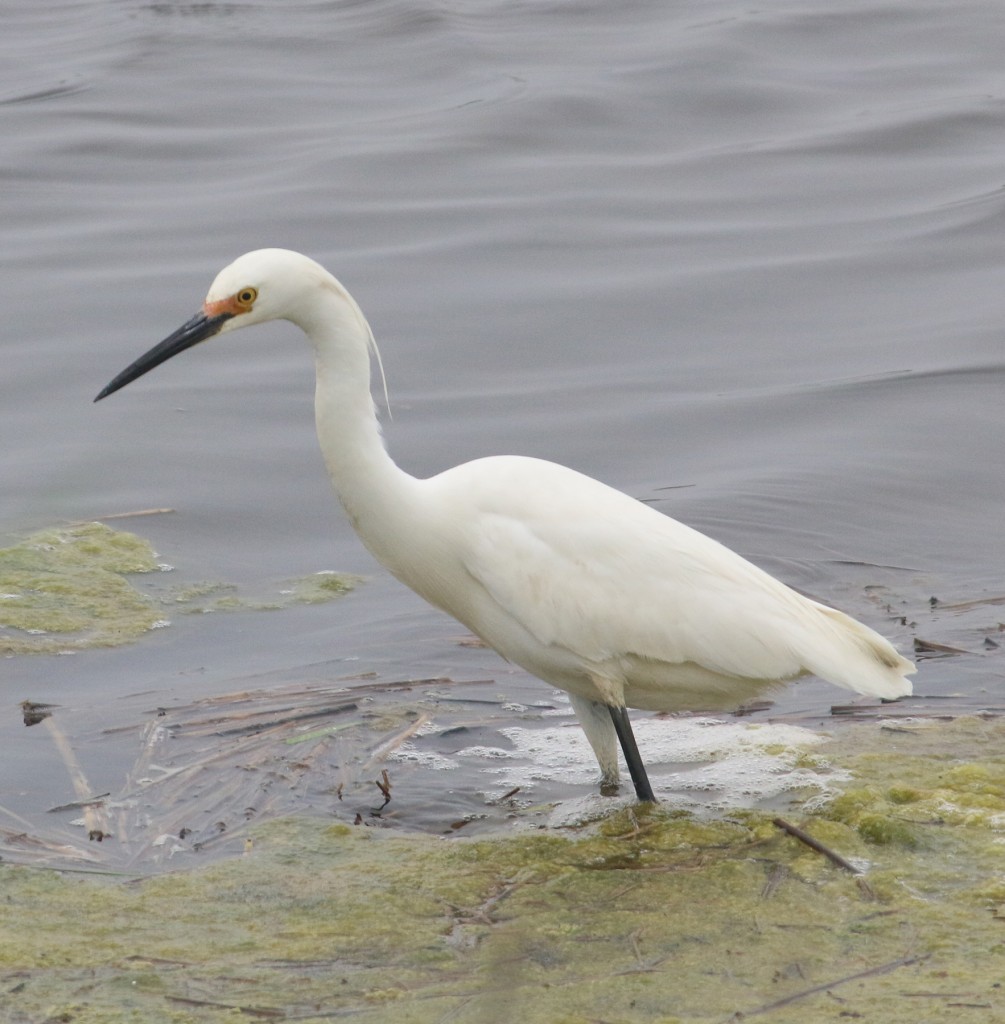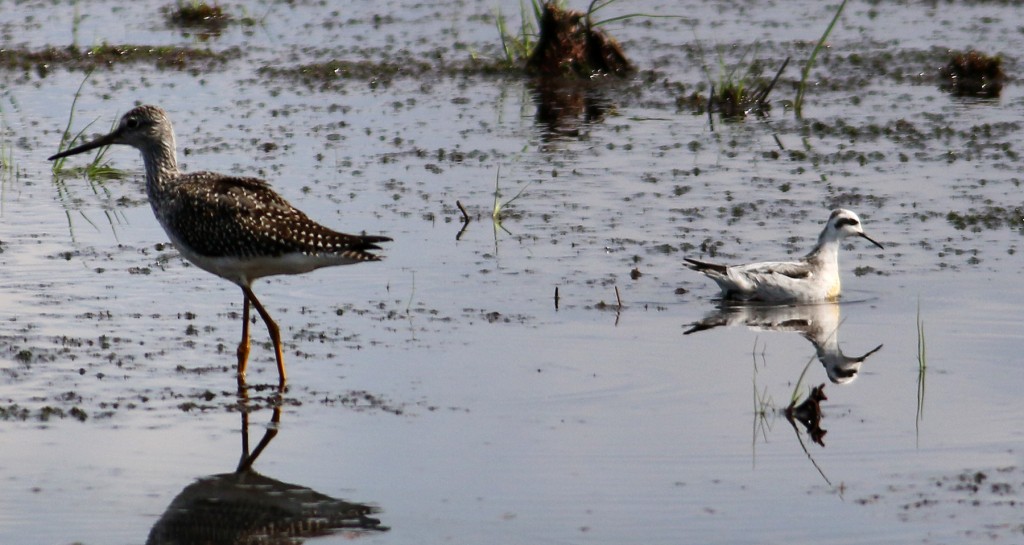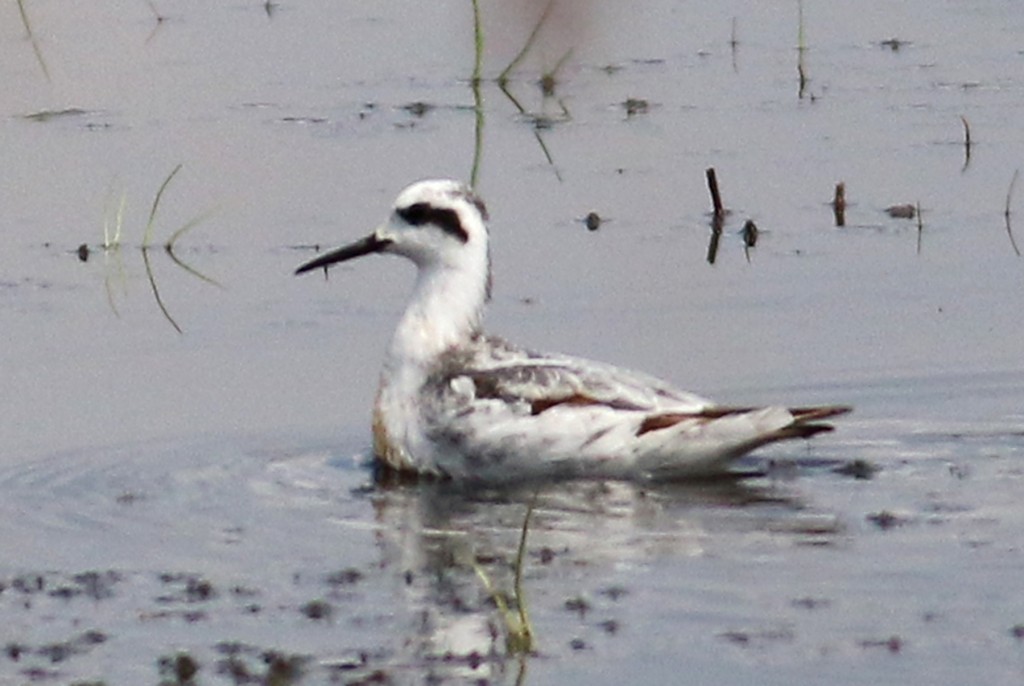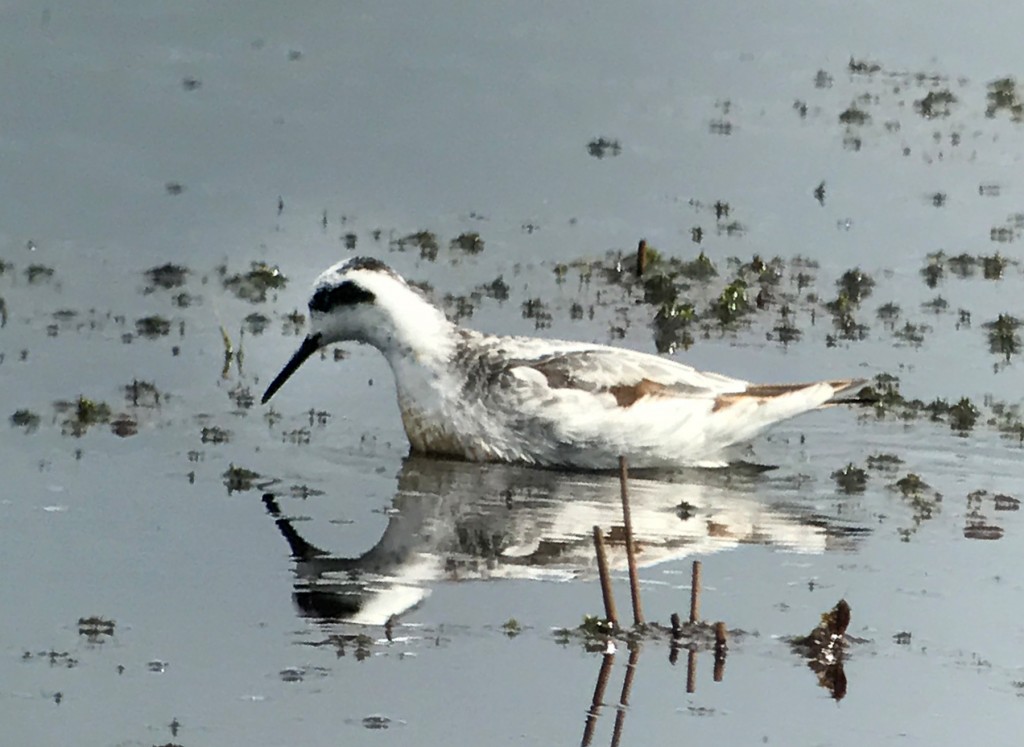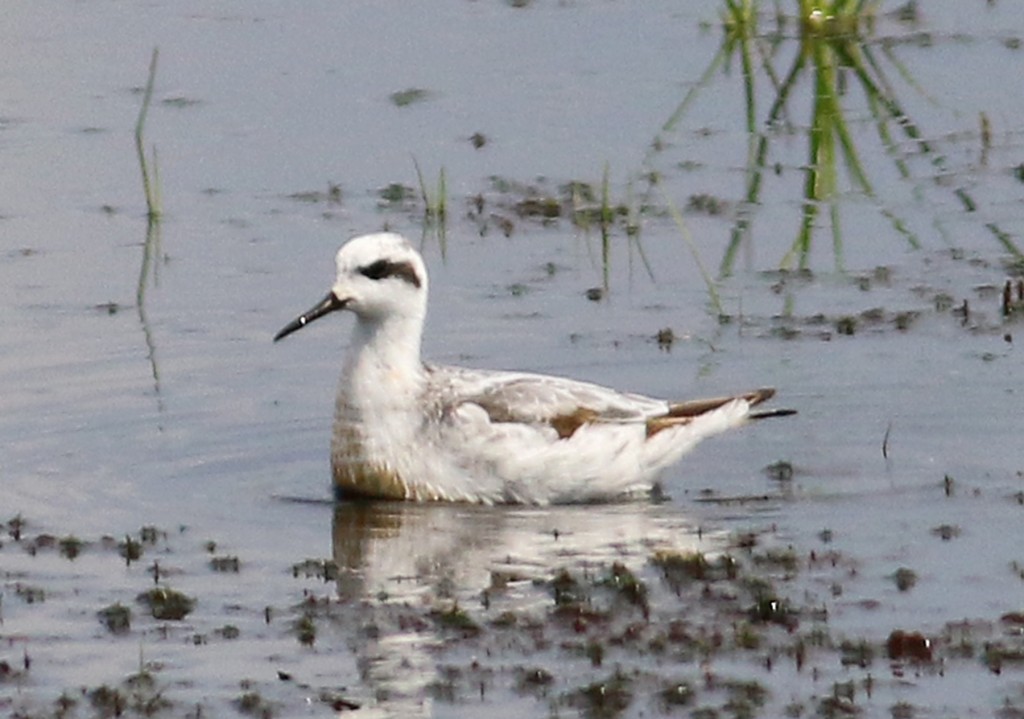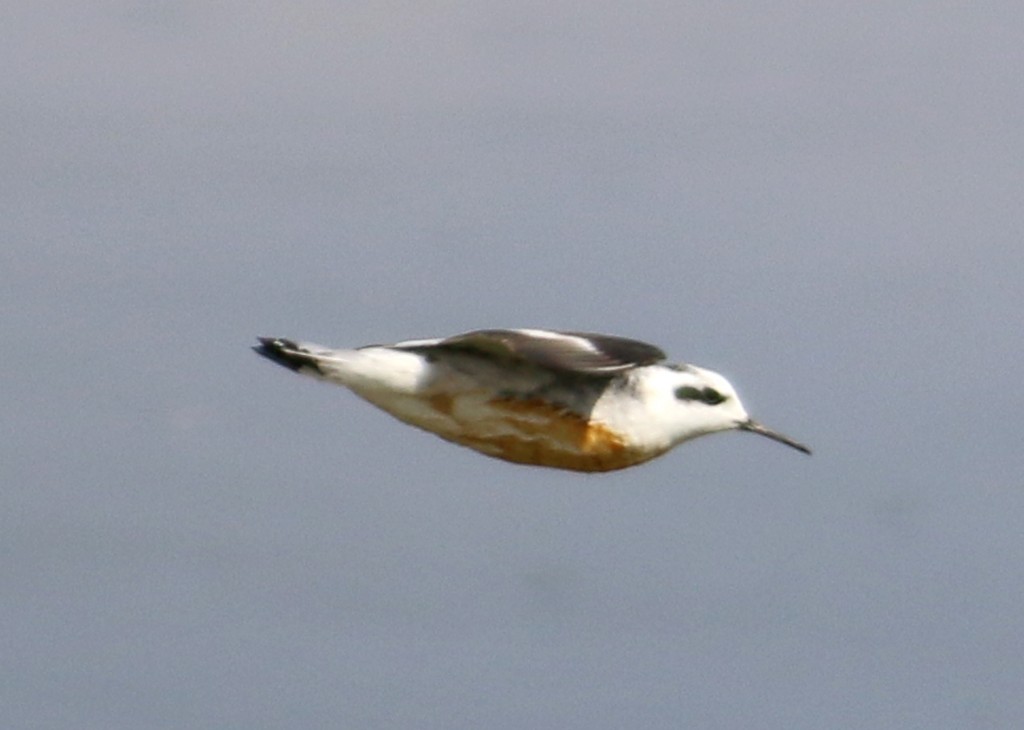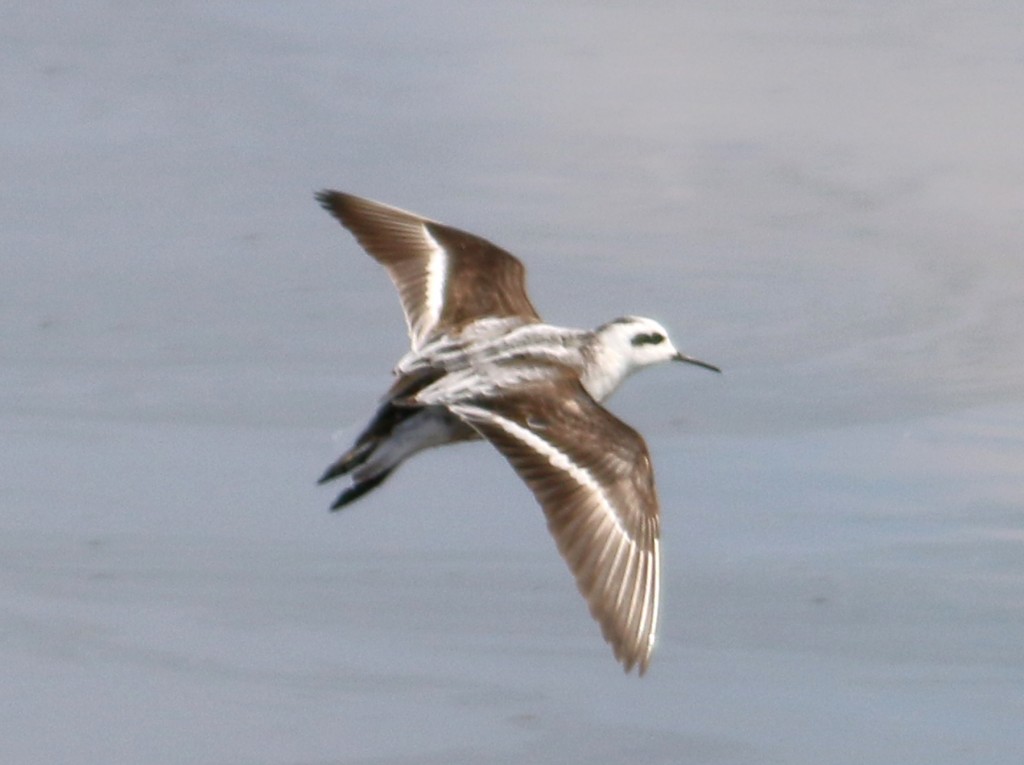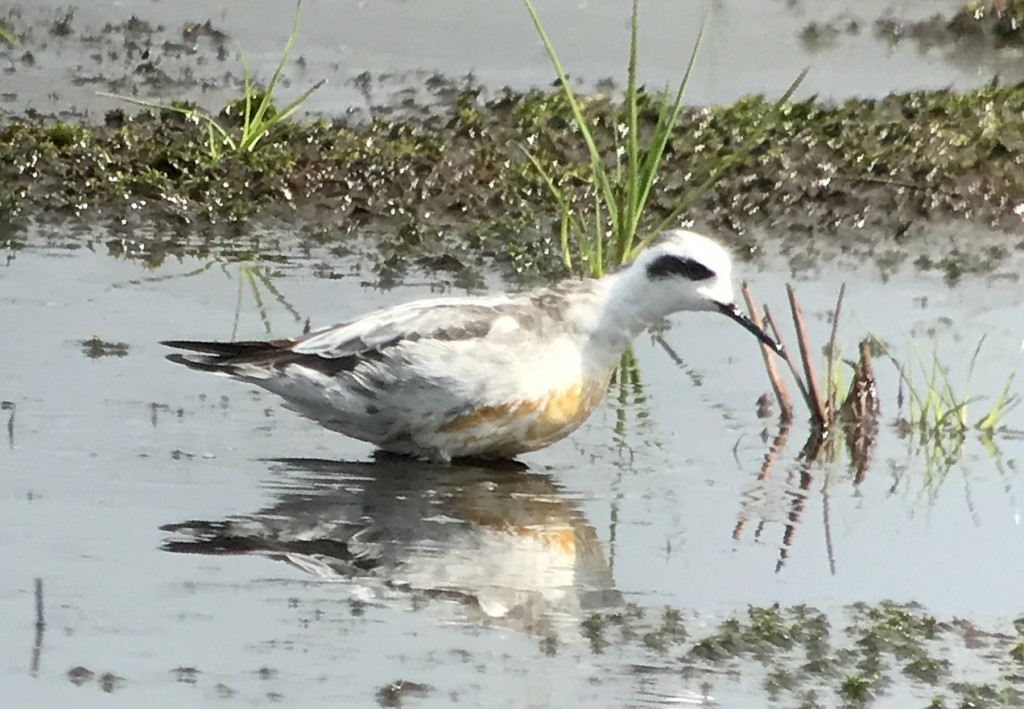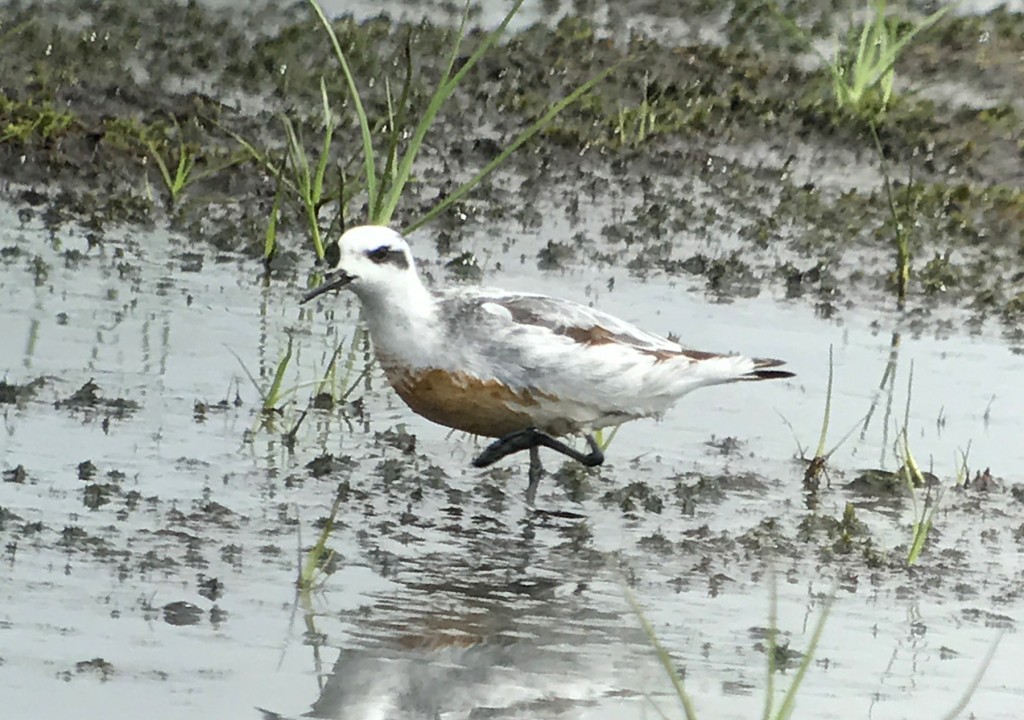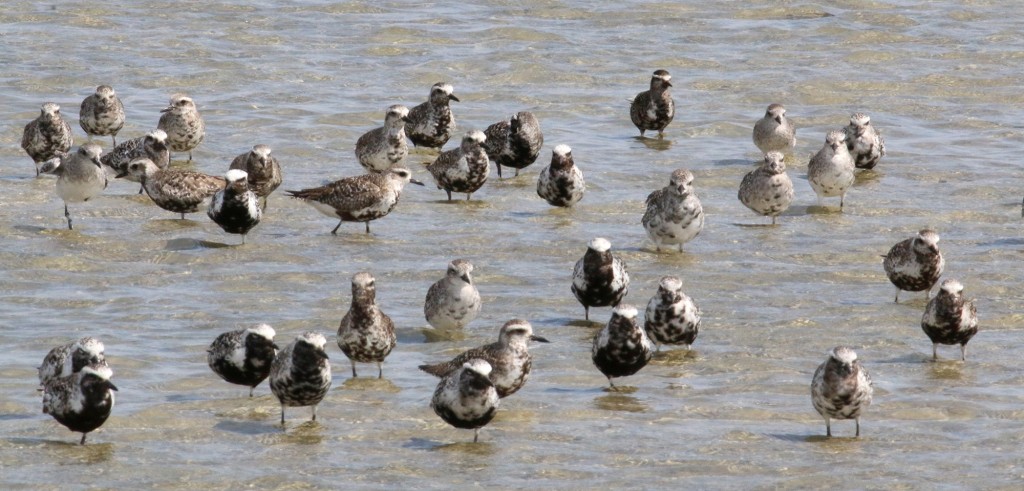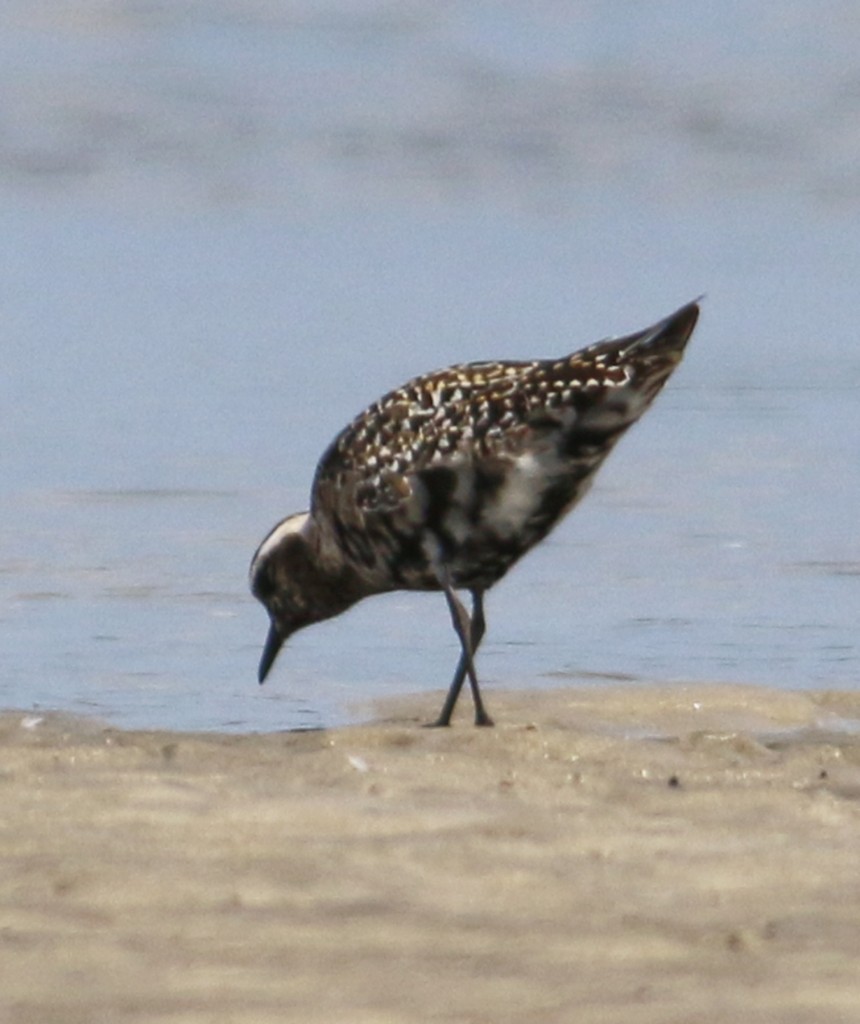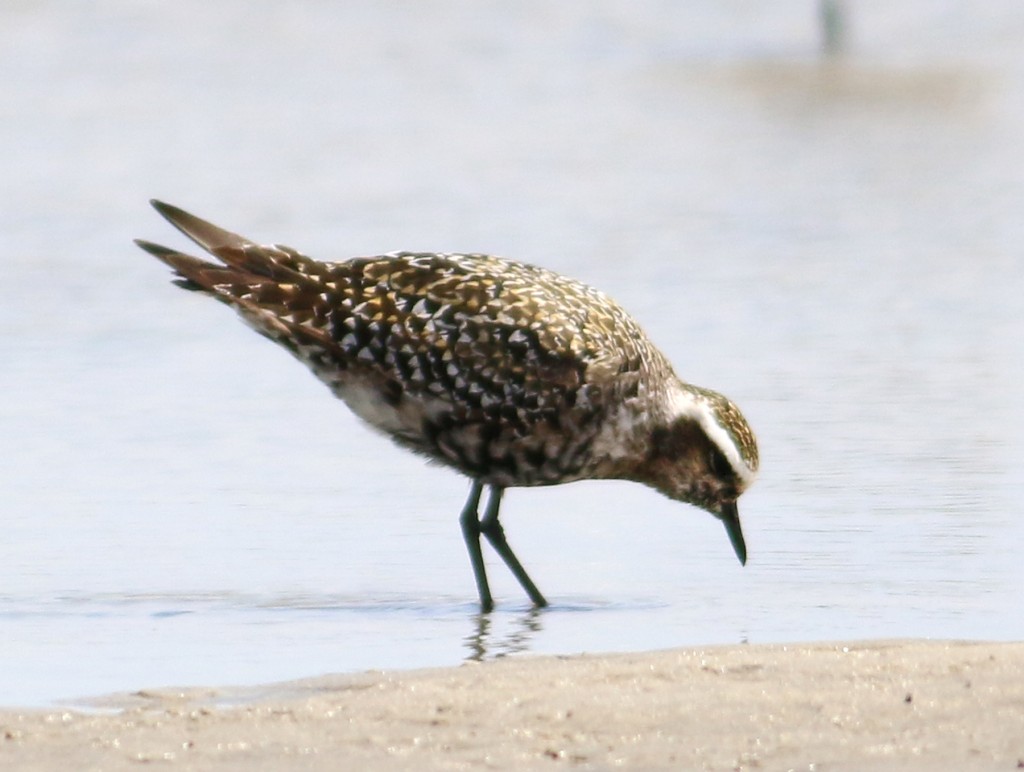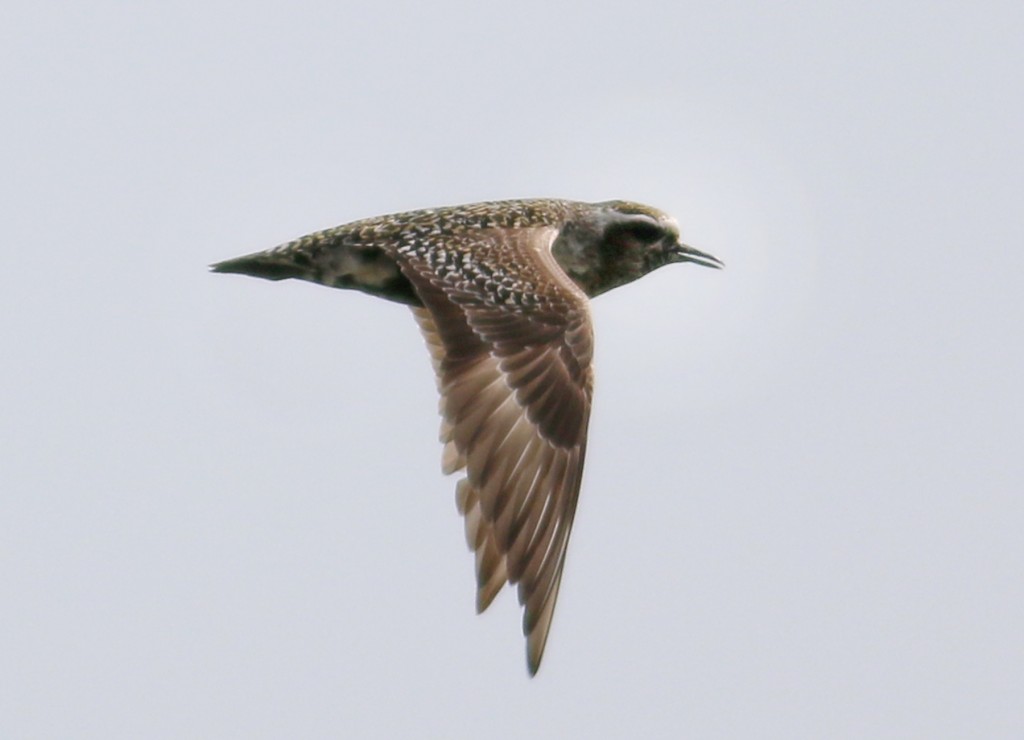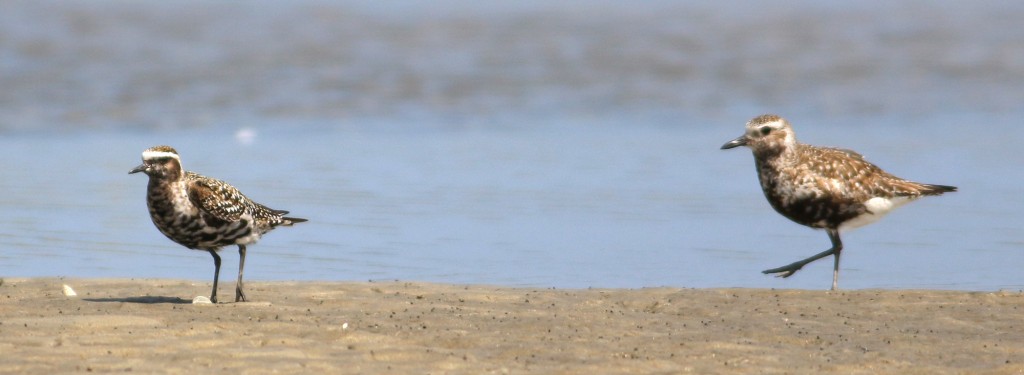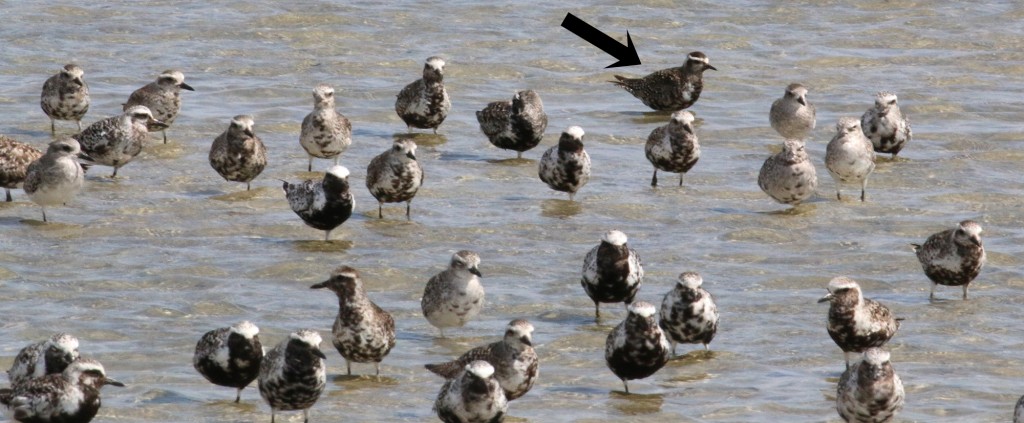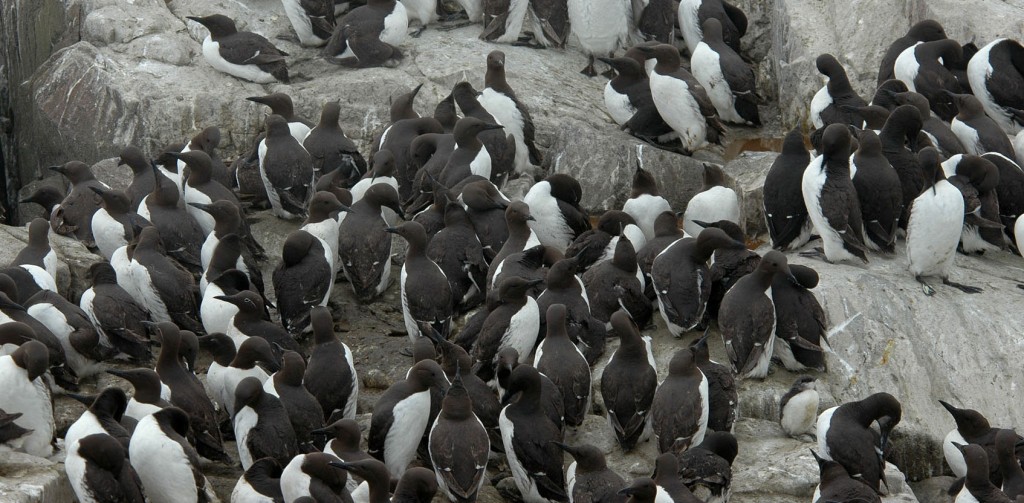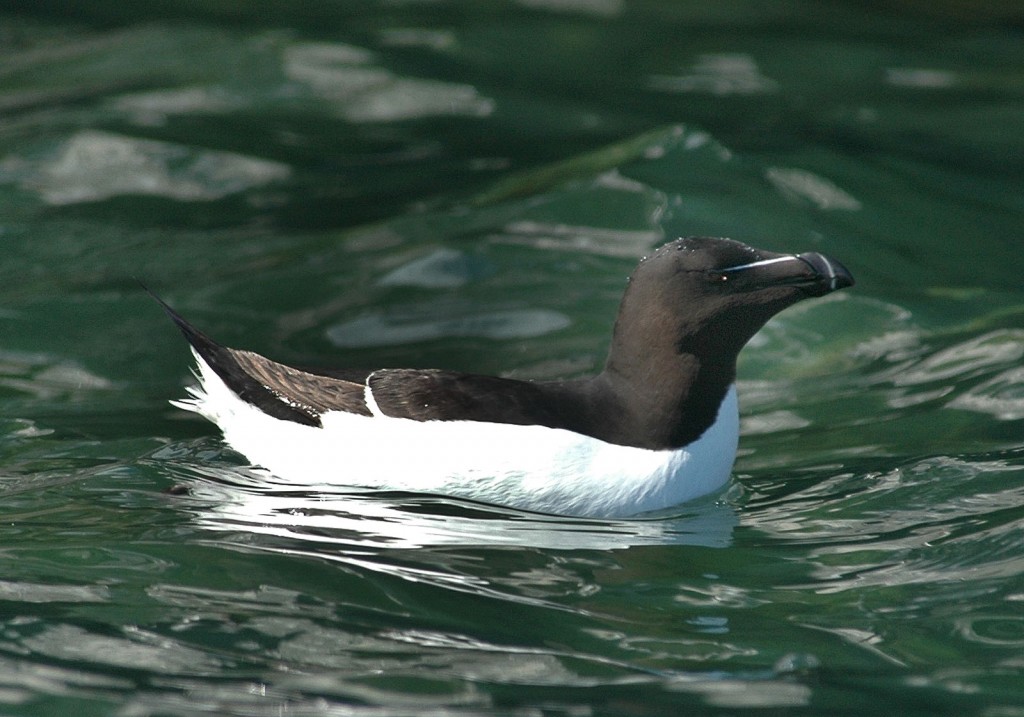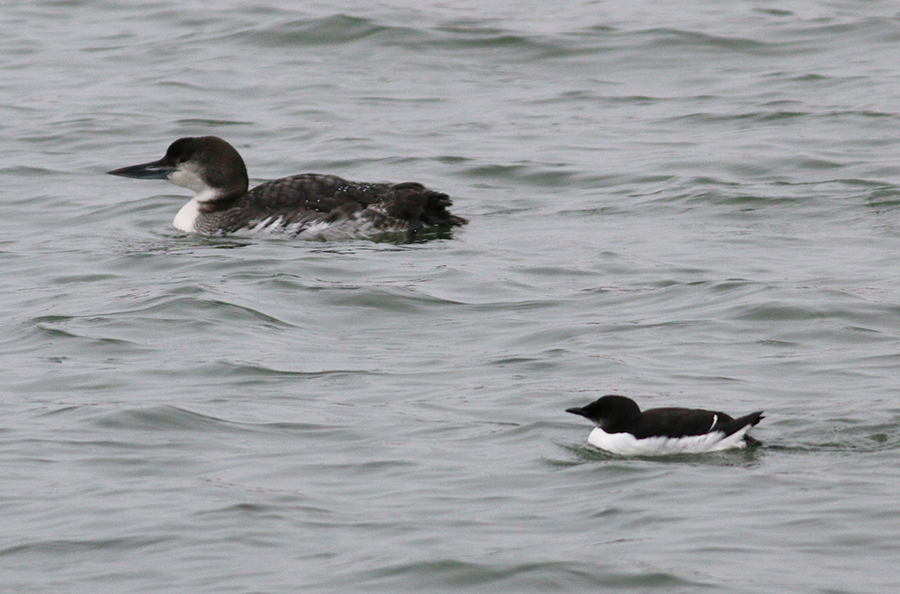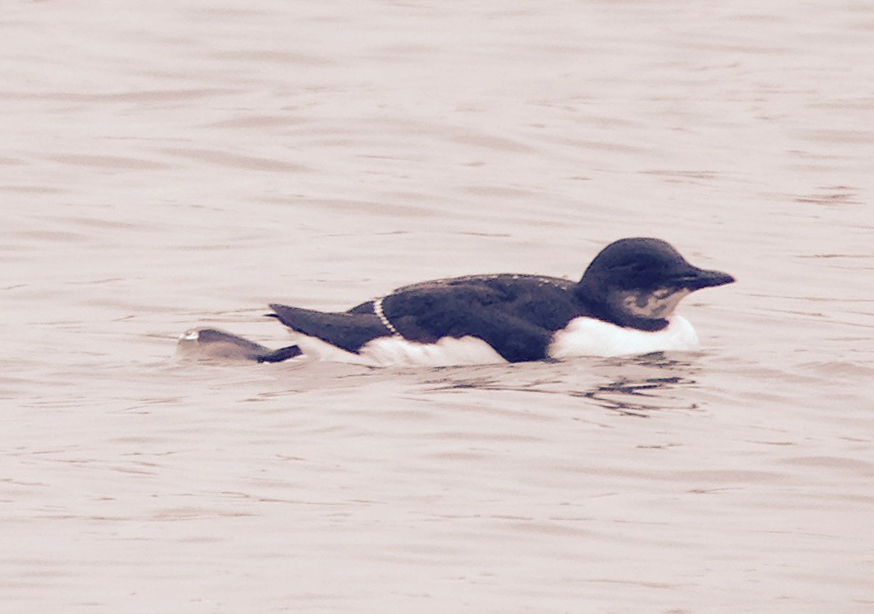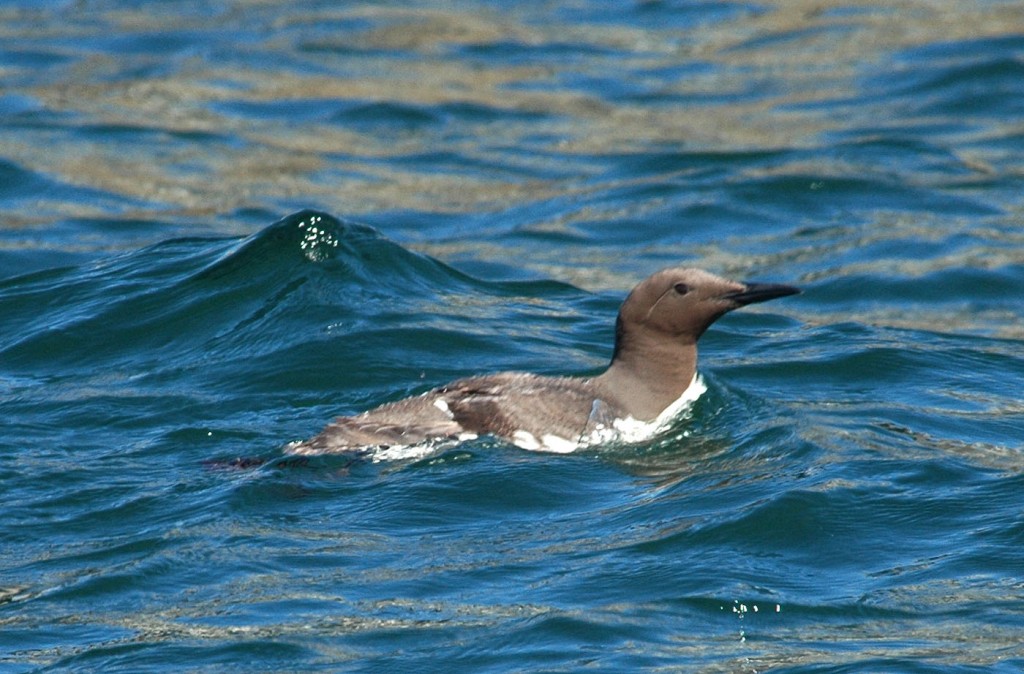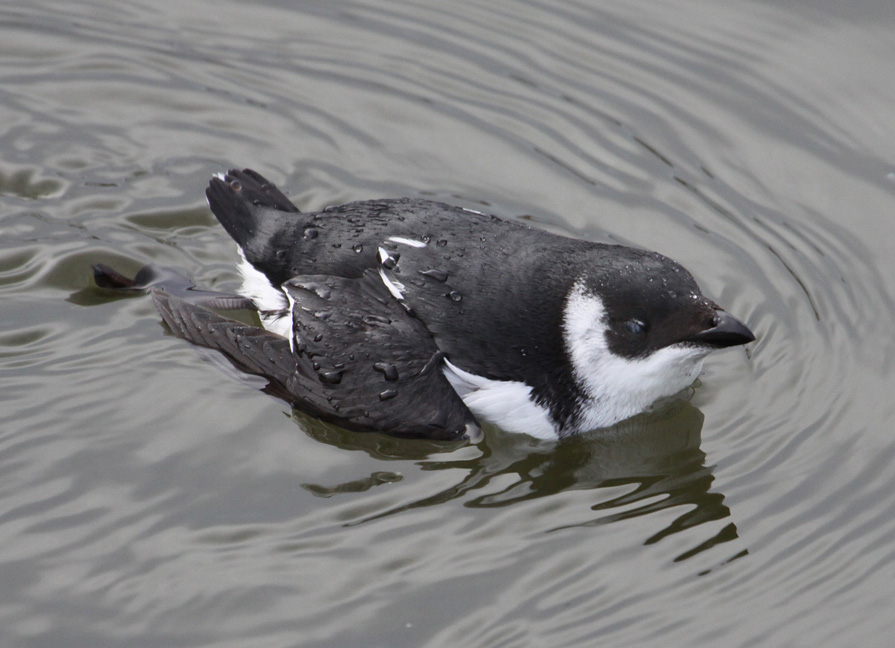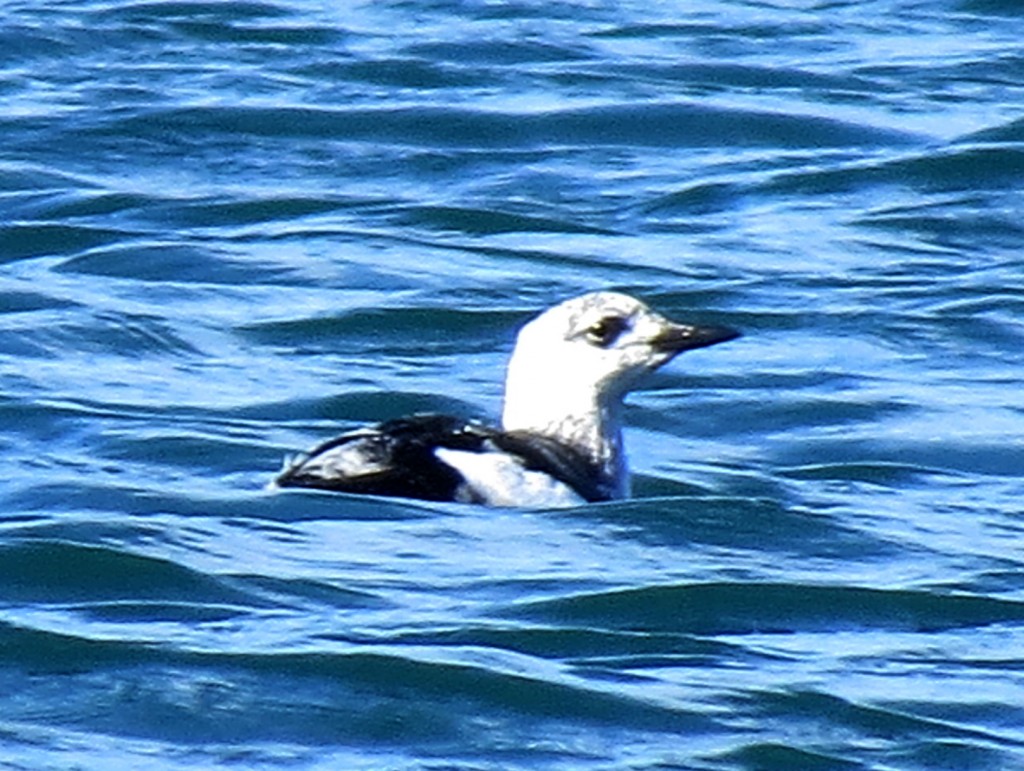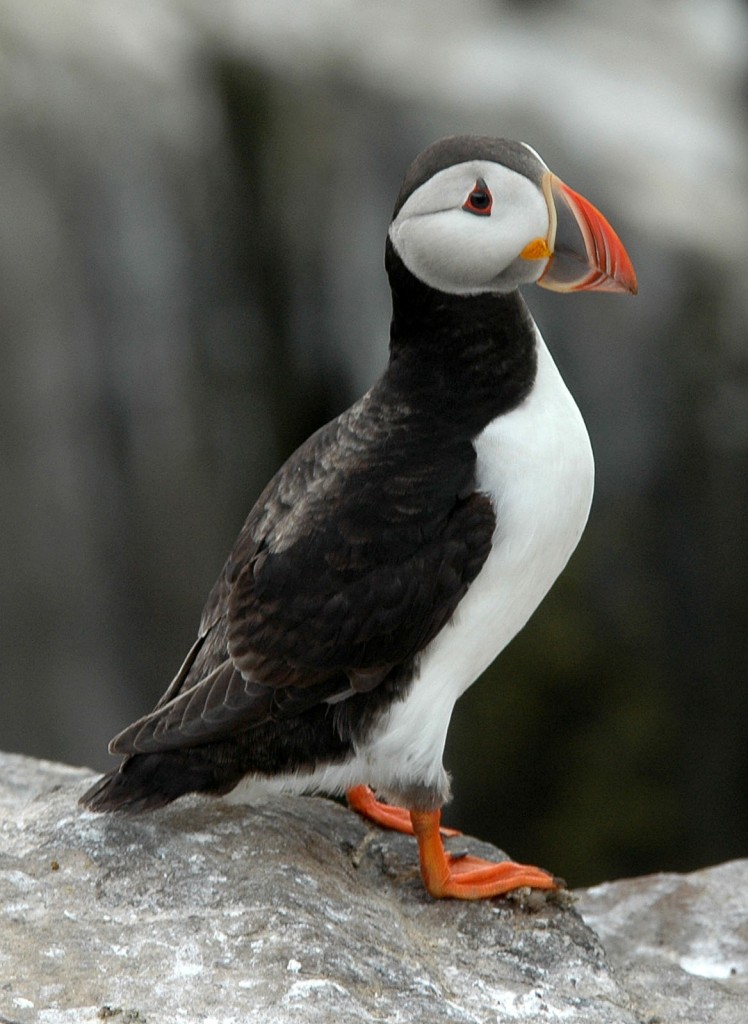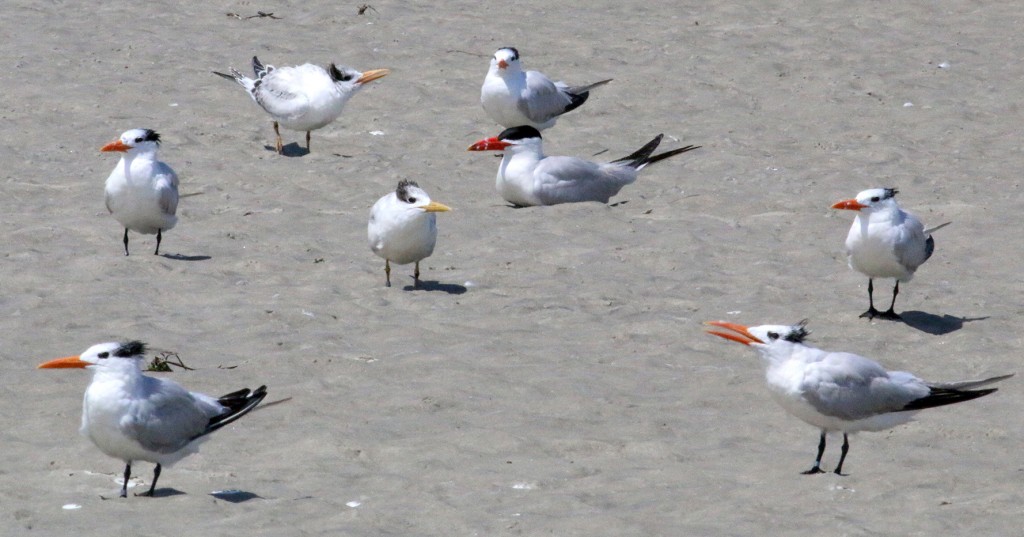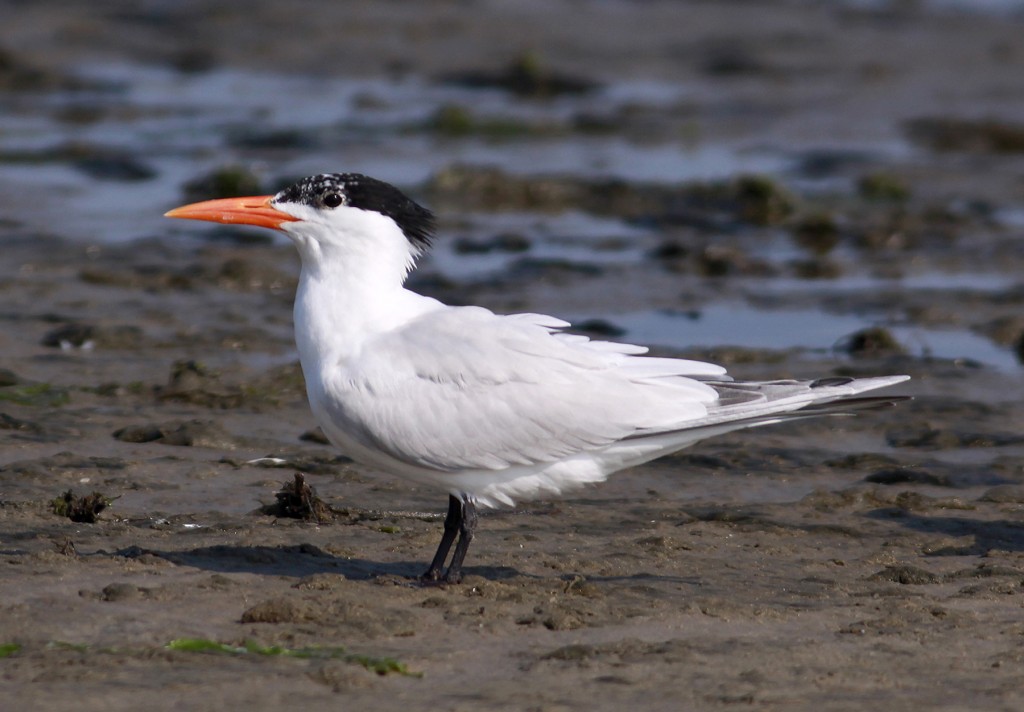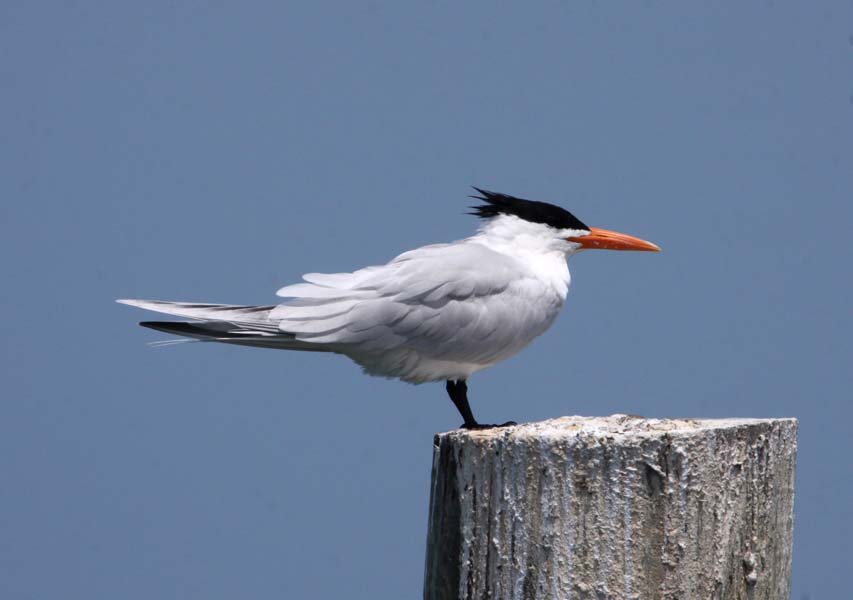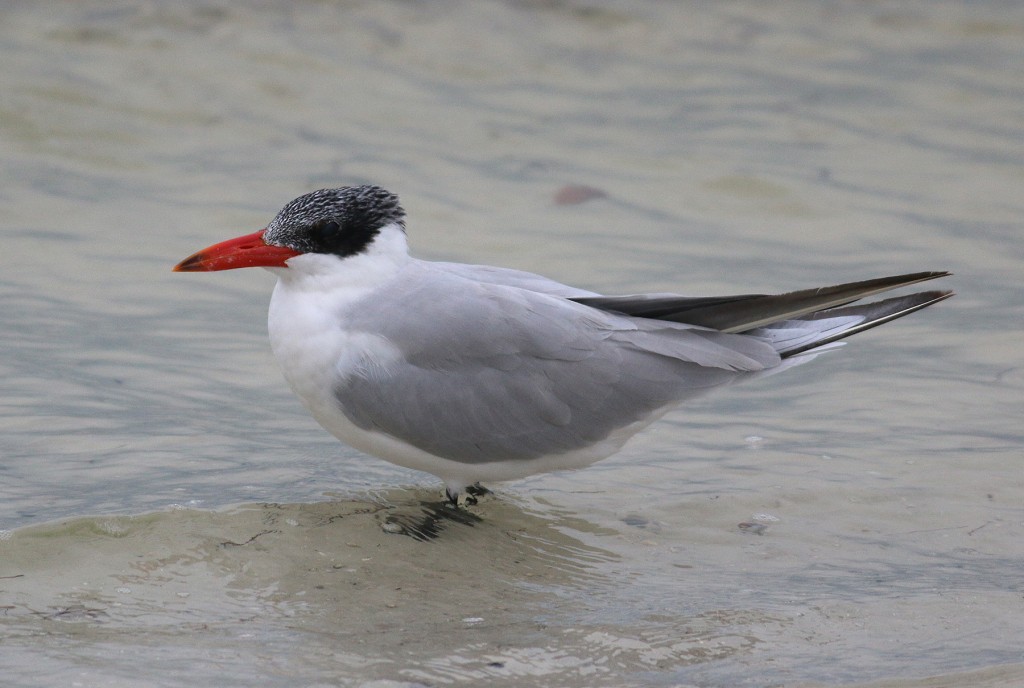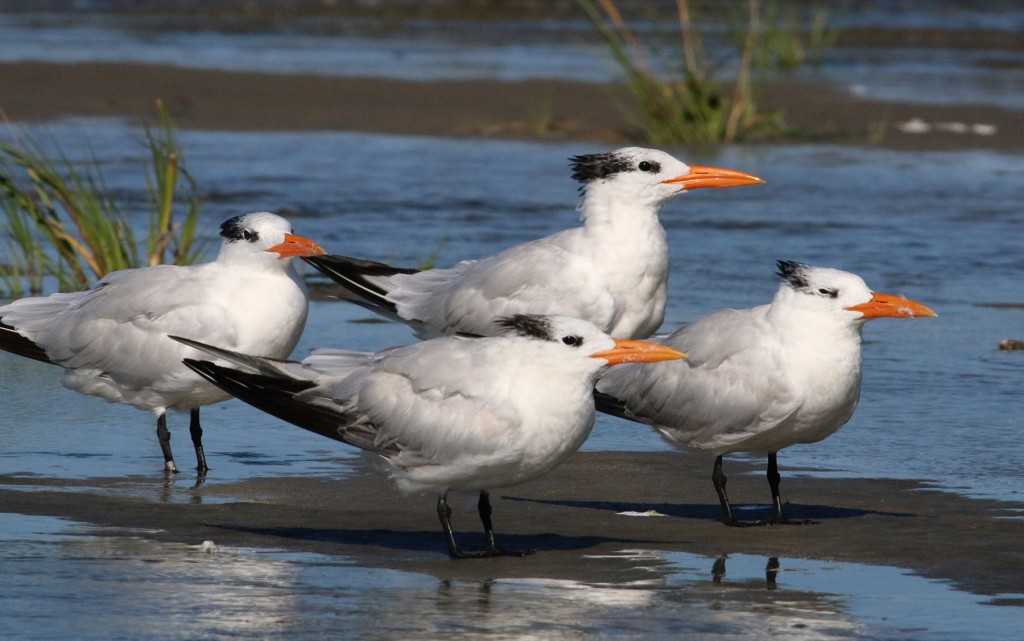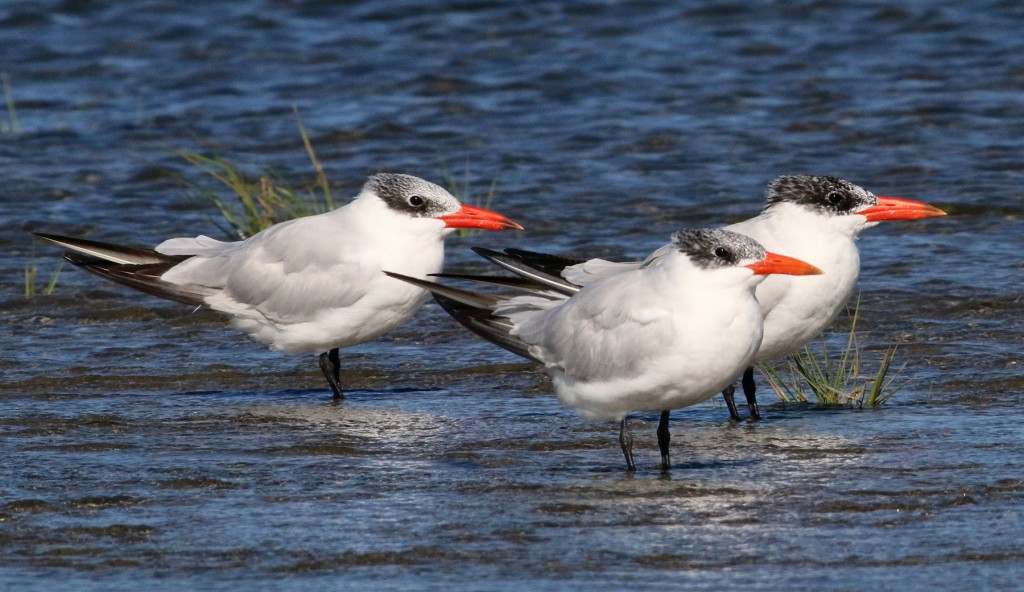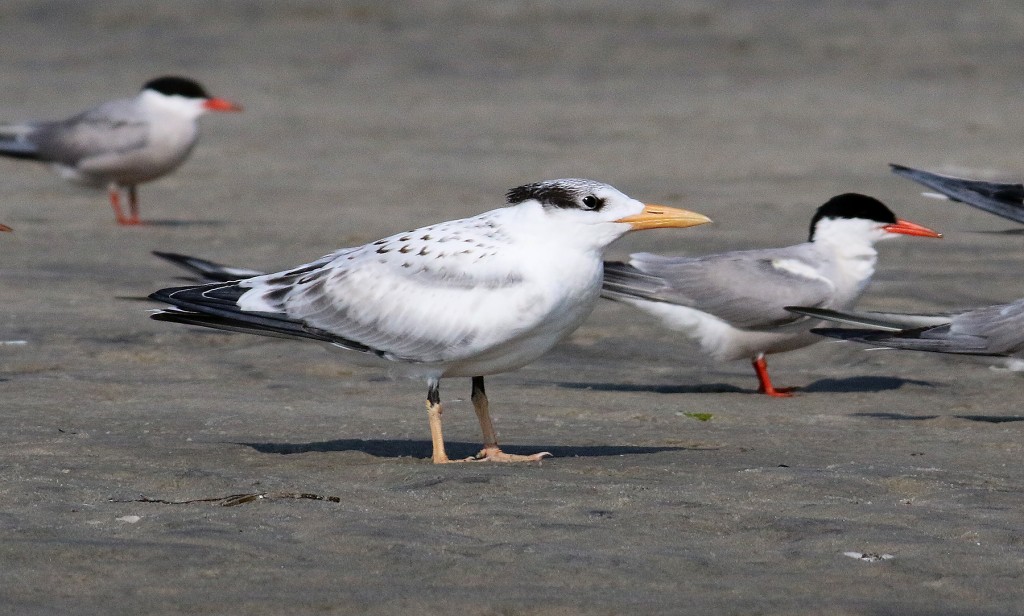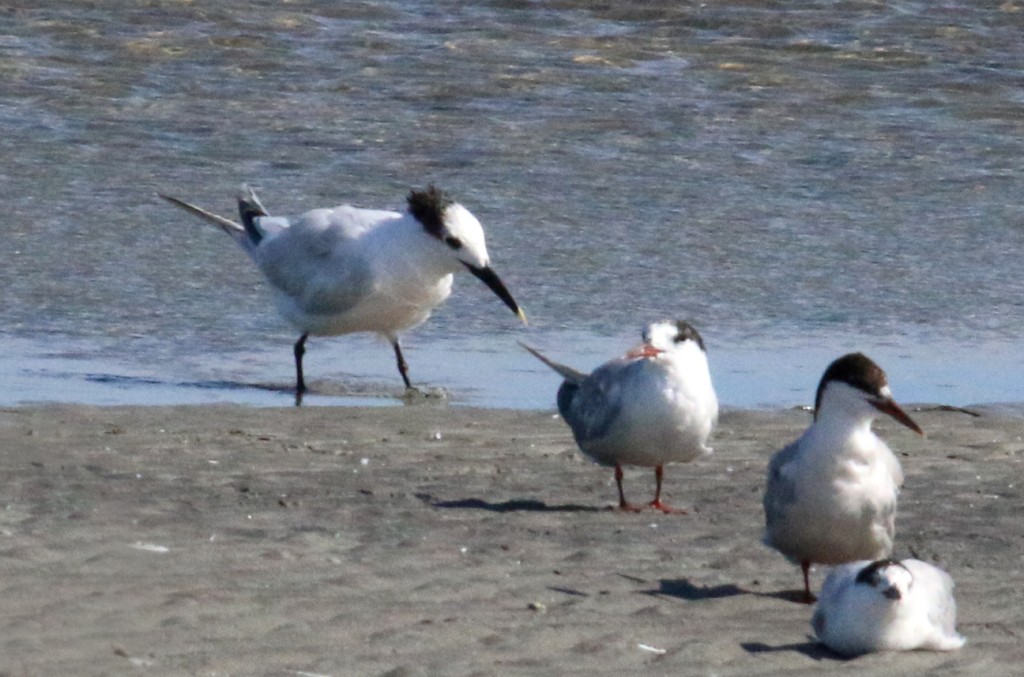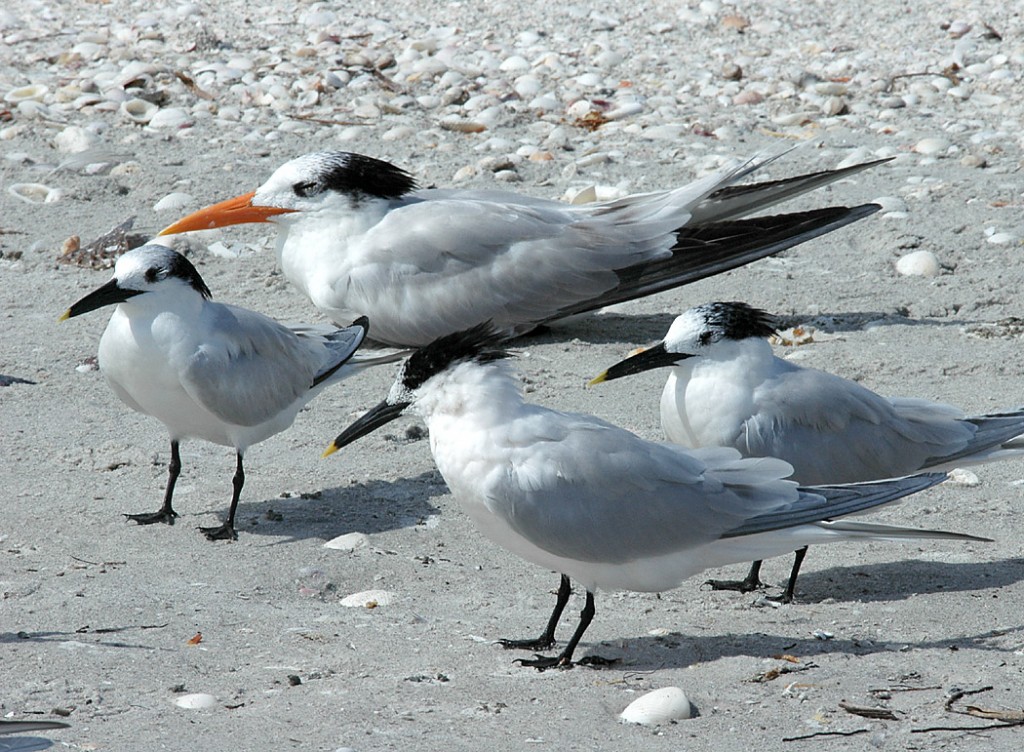At around this time of year Jeanine and I like heading to Cape May, to sit on the bayside dunes at Miami Rd. and sort through the gull-tern-shorebird flock. Well, today the tides were perfect, and the temperature peaked in the mid-60’s with little wind, making the attempt a pleasure (unlike our ill-fated attempt last week with freezing winds in our faces). The main targets are a pair of mostly European species, Black-headed Gull and Little Gull. We have tended to do well with Black-headed Gull over the years, but have only seen Little Gull once in our birding lives, desperately chasing one that had been seen up at Spruce Run Reservoir four years ago.
Today was different. As we walked the shoreline, before we even reached our traditional vantage point ~250 yds. from the parking area, we spotted a dark hooded gull with otherwise very light plumage, a large red bill, and red legs: Black-headed Gull! Nearby were a pair of smaller Bonaparte’s Gulls (or so we thought) for a nice size comparison. It was a great start and time for a few documentation photos.
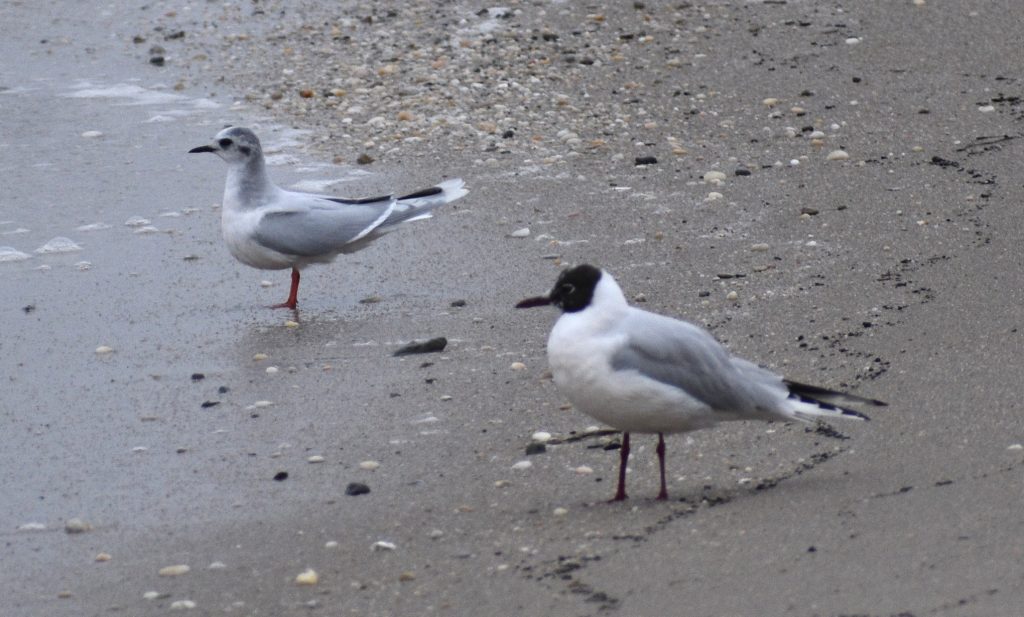
Our initial view of the Black-headed Gull, with a smaller gull (we incorrectly assumed it was a Bonaparte’s Gull at the time) behind it. The light wingtips and relatively bright legs of the smaller bird should have been our clues to look closer. Photo by Jeanine Apgar.
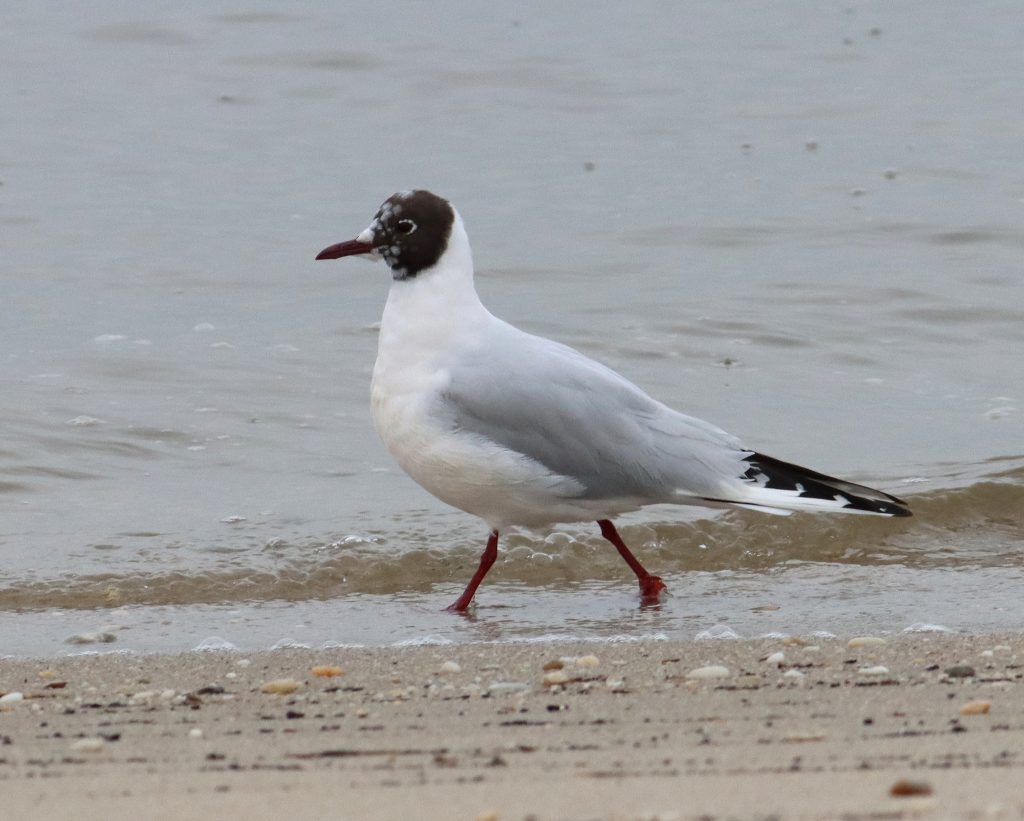
Here’s a better view of the Black-headed Gull, with its dark chocolate hood, large red bill, and bright red legs.
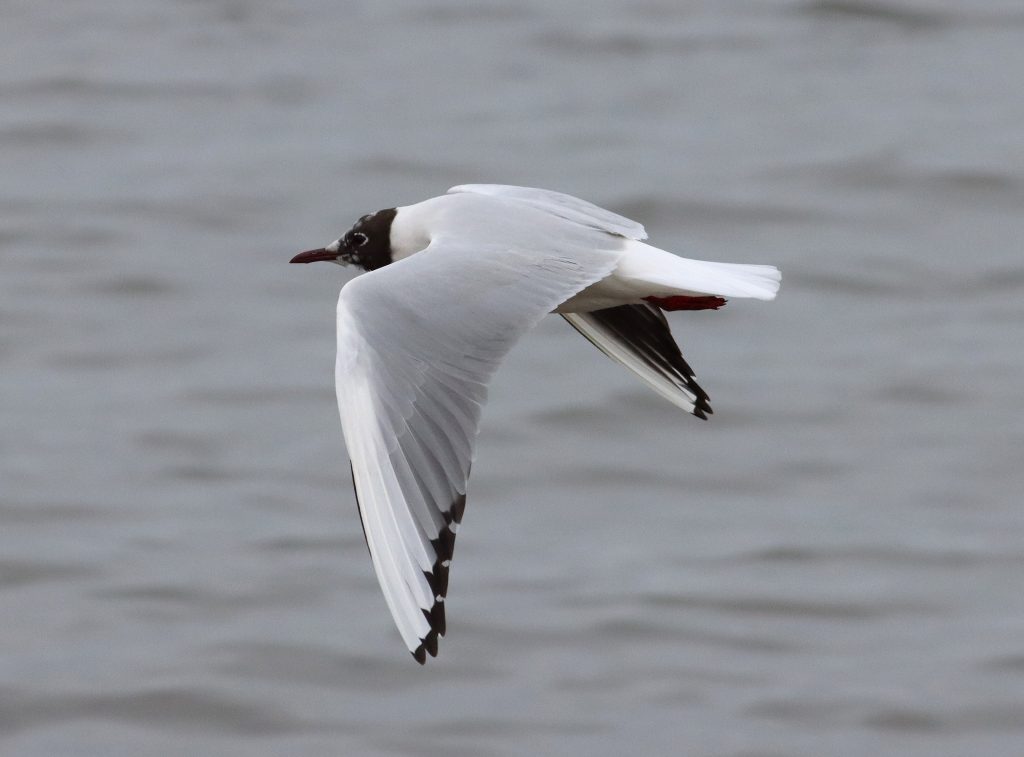
Black-headed Gull in flight shows a dark triangular patch on the underside of its wings that distinguishes it from the more numerous Bonaparte’s Gulls.
Or at least we thought the nearby smaller gulls were Bonaparte’s. After we tried passing these birds to get to the main flock out on the sandbar, they flushed and we noticed that the two smaller birds had dark underwings with white borders. LITTLE GULLS!! TWO LITTLE GULLS!! Or could we be mistaken? Cameras clicked away as the birds circled, landed briefly, but then rapidly flew off northward into the fog, never to be seen again.
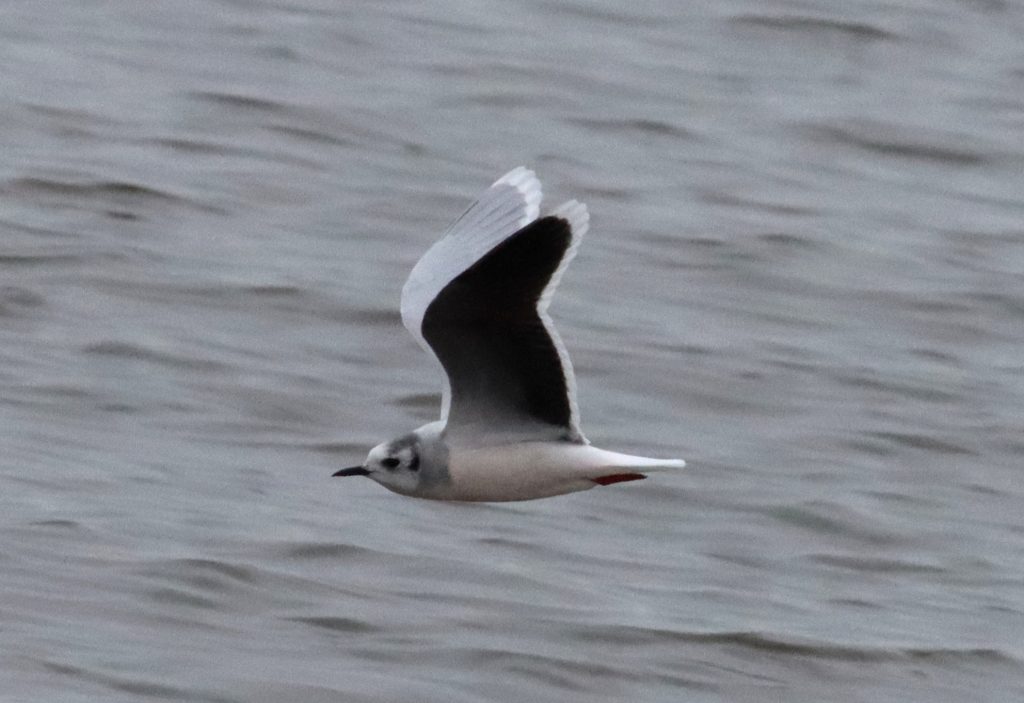
Little Gull in flight, showing the distinctive dark underwings with a white trailing border. Perhaps you can see a slight pinkish hue to its belly.
Or we thought we wouldn’t see them again. We sat near the main flock, sorting through the remaining birds but unable to spot any on the sandbar. We also re-examined our photos, compared them with the field guides, and indeed, the photos revealed that they were Little Gulls; we weren’t mistaken. We texted the sighting and were soon joined by Tom Johnson, who pointed out that a Little Gull was standing on the sandflat a short distance in front of us, which we hadn’t noticed. They look so similar to Bonaparte’s Gulls (and we had no prior experience with seeing them perched), that we weren’t even sure what field marks to use. Leg color? Size? Facial pattern? Each of those marks seemed inadequate. Tom pointed out that the Little Gull has whiter upper wingtips, and that the bird in front of us was showing part of its black underwing. (see the photo below). I think this is the best field mark for us to look for in the future.
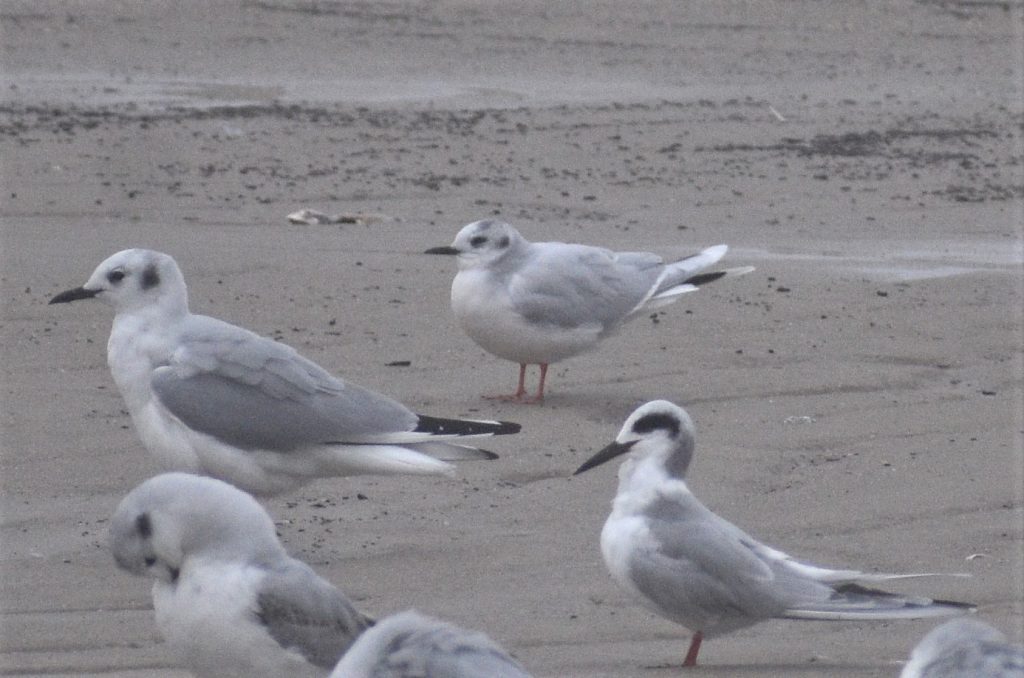
The Little Gull (in center of the photo) spotted (or re-found?) by Tom Johnson, on the edge of a group of Bonaparte’s Gulls and Forster’s Terns. Note the light primaries with the black underside visible on a twisted wing feather. Photo by Jeanine Apgar.
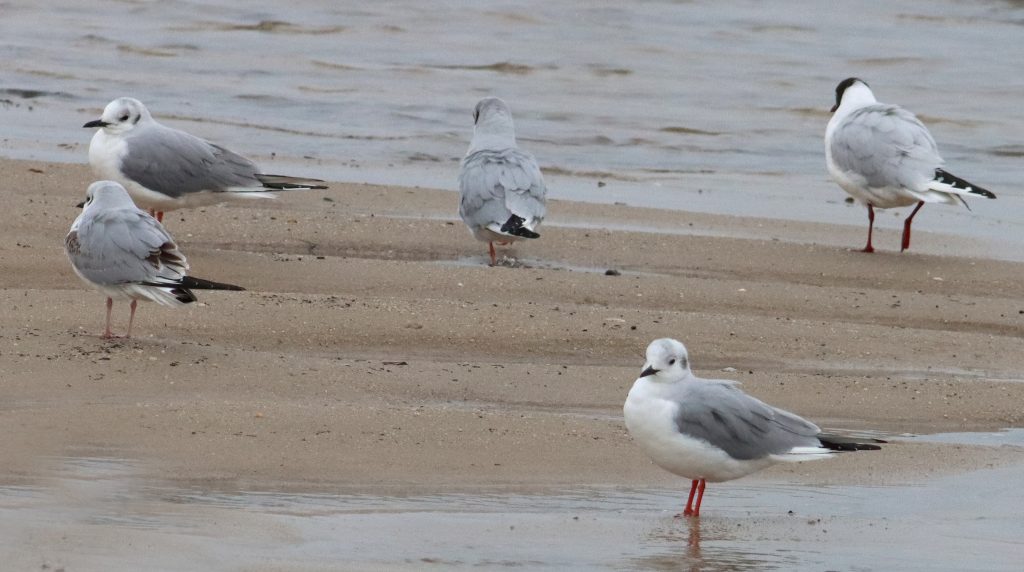
Here’s a small part of the flock, with the Black-headed Gull on the far right, in the company of Bonaparte’s Gulls. Note the dark primary wingtips on all these birds compared with the Little Gull’s light wingtips shown in the photo above.
Now I am curious: were there actually THREE Little Gulls there today (two of which flew off, and one on the sandbar that we missed) or only two, one of which returned without our noticing it? Either way, it was a great sighting, a great day, and a great learning experience.
Later on, we spotted our first Barn Swallow, first Eastern Towhees, and first Louisiana Waterthrush of the season. A super day for ‘Firsts’. I’m still smiling.
